 Thank You!
Thank You!
Your votes and comments encourage our guide authors to continue
creating helpful guides for the League of Legends community.
Recommended Items
Runes:




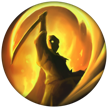

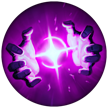




+10% Attack Speed
+9 Adaptive (5.4 AD or 9 AP)
+65 Base Health
Spells:

Flash

Ghost
Items
Ability Order

















Attack Damage

Attack Speed

Lethality
Threats & Synergies
 Threats
Threats
 Synergies
Synergies
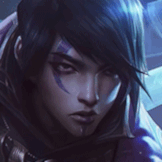 Show All
Show All
 Extreme Threats
Extreme Threats

 Ideal Synergies
Ideal Synergies


Twitch
Twitch shines against immobile ADCs who make easy pray for his stealth engages, and on top of being immobile, Aphelios also struggles with being outranged, which makes him particularly weak against Spray and Pray engages. His pre-6 laning is his weakest stage and this is where you have to try and snowball if the matchup allows. If you get far enough ahead, you may get too strong for him to bully you later.

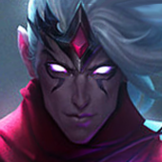




Braum
3 out of 5 Aphelios abilities interact with Braum's passive to stack it faster, and Onslaught stacks it pretty much instantly, making their synergy together crazy good. Even Aphelios's ultimate stacks Braum's passive. He is likely the best support you could have for facing engage supports, but deals quite poorly with ranged matchups as his engage is quite lacking.

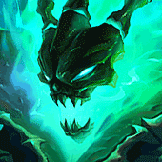

 Synergies
Synergies

Braum
3 out of 5 Aphelios abilities interact with Braum's passive to stack it faster, and Onslaught stacks it pretty much instantly, making their synergy together crazy good. Even Aphelios's ultimate stacks Braum's passive. He is likely the best support you could have for facing engage supports, but deals quite poorly with ranged matchups as his engage is quite lacking.



Champion Build Guide

|
|

 |

Vapora Dark
| ||||||
|
I'm Vapora Dark, a Master Tier ADC main since Season 5. I've been playing
| |||||||
|
Personally, I saw that as an exciting challenge: To create the ultimate resource that would truly go the extra mile in explaining everything there is to Aphelios from start to finish, from the basics to the advanced, from the simple to the complex, from the widely applicable to the most niche. Everything that goes into mastering Aphelios available in one single page. I knew it was going to be a massive project but even then I was not prepared for just how huge an undertaking this was. Had I known how long it was really going to take, perhaps I never would have started. But I did, and over the course of at least a hundred hours I worked tirelessly until my vision for what an in-depth Aphelios guide should look like was finally complete. Now I can say, with full confidence, that this is the only Aphelios guide that you could ever possibly need. I hope that you will come out of this guide as inspired to take on all the challenges of this champion as I was when I first started diving into him. Incidentally, I also happen to make educational ADC content on YouTube dedicated to helping low Elo players improve at bot lane. If you're interested I advise checking out my Aphelios to Diamond YouTube series to see what my channel is all about. Although I main Aphelios, I try to do content on as many ADCs as possible so there's a little bit of something for everyone.
Aphelios is the most unique champion in the game. Instead of having 3 basic abilities and an ultimate, Aphelios has 5 different weapons each with different auto-attack effects and an entirely unique Q ability per weapon, as well as an ultimate with varying effects depending on what weapon he's wielding. Instead of levelling his abilities he levels up stats instead, gaining huge amounts of AD, attack speed and lethality, making him a hyperscaling monster as he maxes them all out. On the surface Aphelios looks very complex, having 5 different weapons, 4 of which have unique interactions depending on his off-hand weapon, leading to 4 different potential effects on cast for each of these weapons, resulting in Aphelios having 16 different potential effects for each of those 4 abilities on top of the one set-in-stone weapon ability, totalling 17 different potential effects Aphelios can get out of casting each of his basic abilities. One thing people say about Aphelios is that despite the above, he's not as complicated as he seems, or that he's actually quite easy once you get the hang of him. They are right about the abilities being easy to grasp once you get the hang of him, but they are still wrong. Everything mentioned in the paragraph above is easy to grasp once you get a few Aphelios games in and learn the key rule to consistently getting good weapon combinations. But that's the easy part, and truly is just the surface. You'd be forgiven for learning those basics and thinking you've cracked it, but in reality one could play 1,000 games of Aphelios and still fail to truly capture the full depth of the champion. Once you've learned the gun cycles, the full extent of his abilities and all their applications, you've learned only the bare minimum there is to know. This is where people make the mistake of thinking they now understand Aphelios and that he's not as hard as he initially seemed. But this isn't even 20% of his full complexity. Mechanically, Aphelios isn't actually all that hard, for the most part. But the depth of this champion is far more ridiculous than people realize. He is often wrongly categorized as an auto-attack based ADC. In reality you should be thinking of him more as a combo-based spellcaster, whose basic attacks while his abilities are on cooldown are just way more effective than your average spellcaster, and for whom the combos themselves incorporate heavy basic attacking. While it's true that Aphelios uses a lot of basic attacks in his playstyle, it's the ability usage that determines 80% of how effective a player will be on Aphelios. And there's a lot about optimal ability usage and basic attack weaving on Aphelios that I promise you have not even begun to think about. |

|
Aphelios wields 5 weapons and has access to two at a time, one main-hand and one off-hand. Each weapon has a unique attack and Q ability, with his ultimate also having a unique effect per weapon. Aphelios has 50 ammo per weapon, and when he runs out he discards the weapon and receives the next one in the cycle. Basic attacks consume 1 ammo, and each Q ability consumes 10 ammo, though he can still cast abilities on less than 10 ammo and it will simply use up all remaining ammo. His ultimate doesn't consume any ammo.
The 5 weapons Aphelios receives are: Aphelios automatically unlocks all his Q abilities at level 2, and his ultimate at level 6. Instead of leveling up his abilities, Aphelios instead chooses between stats to permanently gain. His options are (at the time of writing) 4.5 AD (Q max), 9% attack speed (W max) or 5.5 lethality (E max); and with a max of 6 points that can be put into each stat, he maxes out at 27 AD (Q), 54% attack speed (W) and 33 lethality (E). |

As Aphelios's strengths, weaknesses and playstyle vary greatly from weapon to weapon (let alone combo to combo), it's important to cover what effects each weapon has, and what unique basic ability each weapon has. For structuring purposes, we'll cover Aphelios' ultimate and how it interacts with each weapon, as well as how each basic ability interacts with every off-hand effect later on.
|
Calibrum
| ||||
|
Calibrum gives Aphelios 100 extra attack range, taking his 550 attack range to 650. This is the same range as Caitlyn, making him out-range any other ADCs natural attack range, and leaving him only out-ranged by a Senna with 60 Mist, Kog'Maw with 3 points in Bio-Arcane Barrage, Jinx with 3 points in Switcheroo, Tristana at level 17, and Twitch with Spray and Pray. Enemies damaged by Calibrum through any ability (not just Calibrum's basic ability) are marked for 4.5 seconds. Aphelios's next basic attack against a marked target hits them with hisoff-hand weapon and has 1800 range.
Calibrum's basic ability is Moonshot, which fires a long range bolt of energy in the target direction, and marks them upon hitting them. At first glance Calibrum may just seem like a weapon focused on dealing safe damage. And while this is true, it is also still one of the three Aphelios weapons to have an entirely damage-based focus, alongside Infernum and Crescendum. While it doesn't do as much DPS as the other two of this category, you might be surprised to hear it holds the most single-target burst potential. Couple that with its absurdly high range, and you should see Calibrum Aphelios as not just an ADC with a safe auto-attack range like Caitlyn or Jinx, but also as a form of high range burst assassin. The distinction is very important as Calibrum Aphelios both doesn't have quite as much range and therefore safety as Jinx with rockets, nor the mobility from 90 caliber net as Caitlyn, so doesn't fulfil the role of safe high ranged DPSer nearly as well as they do. The point of the form is single-target burst just as much as safe DPSing, otherwise it would be an incredibly weak weapon overall. To cement its place on Aphelios as a highly damage-focused weapon, even just holding it in your off-hand gives the most damage possible to the off-hand effects of Sentry and Duskwave, as its marking effect not only gets you an extra auto-attack you otherwise might not get to land on every proc, but this auto will also deal even more damage than a regular auto would. The range on these procs shouldn't be seen just as safe damage, but damage you straight up would not be in range to land if not for Calibrum, ergo extra damage. |
|
Severum
| ||||
|
Severum basic attacks lifesteal for 2%-7.1% of damage dealt, while Severum abilities heal from 5%-17.75% of damage dealt. Additionally, any healing performed while Aphelios is max health is converted into a shield lingering for up to 30 seconds. The strength of the shield is 6% of Aphelios' max HP, plus an additional 10-140.
Severum's basic ability is Onslaught, which increases his movement speed by 20% for 1.75 seconds and automatically launches up to 6 basic attacks (increasing by 1 per 50% bonus attack speed) over the duration against the nearest visible enemy, prioritizing champions. It will switch focus if a viable target becomes the new closest enemy. Attacks alternate between Severum and Aphelios' off-hand weapon, meaning every second auto will apply his off-hand weapons' effect. Severum as a form is almost entirely focused on safety, alongside a small bit of utility in the form of the movement speed from Onslaught. It also spends the majority of the game being by far the worst standalone weapon for Aphelios. For starters, its unique effect doesn't actually do anything if you are already full HP (and with a fully charged shield). Additionally, Severum and Infernum are two of the only weapons whose unique effects require levels to scale up to full strength. To Infernum's credit, only half of its unique effect scales with levels thankfully, and its full strength is already unlocked at level 9. But to Severum's detriment, not only is the full extent of its unique effects locked behind levels, but it doesn't even unlock its full potential until all the way up to level 18 (yes, Aphelios's scaling with levels is very weird and inconsistent. More on that later). All this being said, it is not a bad weapon to have, nor is it a weak weapon overall. Both Onslaught and Severum Moonlight Vigil are respectively the safest basic and ultimate abilities in Aphelios' kit. The correct usage for Severum is mostly to use its basic and ultimate abilities for safety as needed, while pairing it with a form with much better unique properties for auto-attacking, and using solely that weapon for auto-attacks. Severum auto-attacks can and should be used for sustaining between fights and trades on minion waves and jungle camps, but should almost never be used for auto-attacking in a fight. It is overall a great weapon to have, just so long as you are using it correctly. Once you're full build and have Severum fully scaled at level 18, at which point you also happen to have full points in all of your passive stats, to its credit it starts to stop being so bad as a standalone weapon just because you're going to be doing so much damage even with red autos by that stage that you can actually get a lot of healing done in-combat, and the scenarios where you should be auto-attacking with red in fights start to become a lot less niche. Definitely making this the form that benefits the most from levels and items. But even then it's still not the best lategame weapon, and also still does very little if you already happen to be full HP, it just becomes a lot better at trying to clutch out fights from low HP by itself, making it a decent albeit still situational standalone weapon to have in your arsenal.  Fun Fact Fun Fact |
|
Gravitum
| ||||
|
Gravitum basic attacks slow enemies for 2.5 seconds, starting with a 30% slow which decays to 10% within .7 seconds.
Gravitum's basic ability is Binding Eclipse, which roots all enemies affected by Gravitum's slow debuff. It also empowers any in-flight Gravitum basic attack projectiles to apply Binding Eclipse to their target upon landing. It cannot be cast without any valid targets marked by Gravitum's slow debuff, but can be cast with a mid-flight Gravitum auto headed towards a valid target, even if the target were to become invalid after the cast. Gravitum is universally considered Aphelios's least fun weapon, yet simultaneously one of his strongest. A basic ability that is just a simple root with fairly low damage is as uninteresting as it is powerful. It isn't helped by the fact that Binding Eclipse is the only basic ability in Aphelios's kit that doesn't have an off-hand interaction. Other weapons' basic abilities can have interesting interactions with Gravitum, but Binding Eclipse itself has no interaction with other weapons which makes it feel very uncreative and bland compared to other abilities. Personally I also used to be in the camp of disliking Gravitum and always tried to get rid of it as fast as possible, but since devoting myself more heavily to learning the ways of Aphelios it's really ended up growing on me. Similarly to Severum, it feels like an amazing supplemental weapon to hold alongside other weapons, except that while Severum's supplementation mostly comes in the form of safety, Gravitum feels very good at setting up your second weapon to succeed. The two most common weapons to pair it with are Calibrum and Infernum, and Binding Eclipse is amazing at setting yourself up to land both of their basic abilities and ultimates. There's also quite a few combos involving Binding Eclipse that are so much more interesting and fun to use than combos not-involving it. Once you learn all the ways you can combo it with your other abilities it definitely starts to move up on your list. Weapon synergies aside, Binding Eclipse is also just one of the strongest abilities an ADC could have. It makes him the only ADC in the game to have an entirely unconditional pre-6 lockdown CC ability, that is just completely on-demand. This makes him amazing at setting up early ganks for his jungler as early as levels 2-3, and even easy engages for his support, especially skillshot based supports. It provides easy setup for skills like death sentence, rocket grab, Dark Binding and zenith blade, making Binding Eclipse especially powerful when the synergy between Aphelios and his support is particularly on point. The actual slowing effect of Gravitum is not amazing early on. A 30% slow is strong but a 10% slow is not, and the .7 second decay to 10% is very fast. However, the more attack speed you have, the more frequently you'll be reapplying the slow at its full strength, so the higher the uptime on the stronger slows will be and the lower the uptime on the weaker slows. Though it may not explicitly state that it scales with attack speed, Gravitum definitely becomes more effective the more attack speed you have. As a standalone weapon, Gravitum is decent but suffers from lack of damage, as Binding Eclipse has by far the lowest base damage and AD scaling of any basic ability in Aphelios's kit, and the basic attacks themselves have no form of damage modifier. It's decent for kiting, but with Aphelios's short 550 range it will rarely prevent champions with dashes from getting on top of you, and even through the 1 second root for self-peel this will often lead to death anyway, making Gravitum function really a lot better as an aggressive chasing weapon than as a self-peeling tool in most cases. It's also much better from ahead than behind compared to other weapons, as if you're strong enough to just chase someone down to the death they have to play far more respectfully than if they were capable of destroying you in a fight, while other weapons don't offer that same 'kill me or be killed' capability, as they can't turn a single auto-attack into a fatal chase. Since Gravitum offers very little damage by itself, it's a lot more effective when you have an item lead, while other weapon combinations can make up for lack of items through having more innate damage, so how much you end up sitting on Gravitum just to auto-attack with over other available weapons like Infernum depends on how much you feel your damage will be sufficiently high with it or not. |
|
Infernum
| ||||
|
Infernum basic attacks split into a cone of 4 missiles behind the target which deal damage to any enemy they pass through. The primary target takes 10% extra damage from Aphelios's auto-attacks, while secondary targets take 82.5% / 110% damage based on level. Secondary bolts damage is reduced to 25.3% / 33% damage to keep his early waveclear in check. All Infernum damage can crit, and critical strikes spray 6 missiles instead of 4 in a 50% wider cone.
Infernum's basic ability is Duskwave, which unleashes a wave of energy in a cone in the target direction, dealing damage to every enemy hit and locking onto them to fire a basic attack from Aphelios' off-hand weapon. The player can't start basic attacking manually until this sequence is over. Infernum is without a doubt Aphelios's greatest standalone weapon, just for the sheer amount of damage it does with no setup or assistance from other weapons required. Even though AoE damage is its strong point, it also does the most single-target DPS of any weapon that isn't Crescendum as a result of dealing 110% damage on basic attacks, which also leaves it dealing 192.5% damage on crits rather than 175%, and 242% damage on Infinity Edge crits instead of 220%. The more AD and crit you stack, the more evident its superior damage becomes. It also has the second highest burst combo of any weapon. Early on the damage really pales in comparison to Crescendum's potential, but it's still the strongest laning weapon you can have as it offers unparalleled wave control, good poke damage through the minion wave, and the best reliable trades through Duskwave that don't get blocked by minions. Overall Infernum is a fantastic weapon with no reliance on other weapons or its own ultimate, despite also having an incredibly powerful ultimate. |
|
Crescendum
| ||||
|
Crescendum basic attacks hurl a blade to the target which lingers for .25 seconds before traveling back to Aphelios. Aphelios can't attack again until the blade has returned to him. The closer Aphelios is to the target, the faster the blade will return to him, and the faster he will be able to auto-attack, essentially giving him more DPS the closer he is to the target. Additionally whenever an Aphelios ability has him auto-attack with Crescendum, he instead fires a Chakram at the target that returns to him, and can stack up with other Chakrams up to a limit of 20. Each Chakram adds an initial 15% damage to Crescendum basic attacks, with diminishing returns per Chakram down to a minimum of 5% damage per Chakram, with this minimum limit reached at 10+ Chakrams.
Crescendum's basic ability is Sentry, which deploys a small turret at the target location after 0.35 seconds. The Sentry activates and lasts for up to 4 seconds when an enemy is in its attack range, and attacks with a replica of Aphelios' off-hand weapon. The Sentry can crit, and attacks based on Aphelios' attack speed. If there are no enemies in its attack range it will be inactive and untargetable until it activates or up to 20 seconds before expiring. Crescendum may be a little confusing just reading its effects, but it'll make a lot more sense when you execute it in-game and see how it works. Even with no Chakrams, Crescendum is already the highest DPS weapon in your arsenal as long as you're attacking from close range, the closer the better. Having even just 1 Chakram is enough to make your Crescendum basic attacks deal more single-target damage than Infernum basic attacks. Building attack speed increases the speed with which Crescendum's blade will return to you, but no matter what there will always be a .25 second where it lingers on the enemy, giving Crescendum diminishing returns with attack speed compared to other weapons. Additionally when auto-attacking from melee range of your target, there's barely any travel time from you and your target, so the blade speeding up has very little benefit, and there is little to no difference in attacking with Crescendum from melee range with high attack speed or low attack speed. Medium-long distances will benefit more from attack speed, but still with diminishing returns compared to other weapons due to that unwavering .25 second lingering period. Melee range Crescendum will always be your highest DPS weapon no matter how many Chakrams you have, but when attacking from max range you'll need Chakrams for this weapon to be effective. Your Chakrams will mostly be generated by using other weapons' abilities with Crescendum as your off-hand, which makes it important to pair it with weapons that can easily and consistently generate Chakrams. The best abilities at generating Chakrams are Onslaught and Duskwave, as the former will strike a target many times with half of the strikes generating a Chakram, and the latter can strike many targets at once and generate a Chakram from each hit. Universally considered the worst weapon to pair with Crescendum is Gravitum due to the fact that Binding Eclipse has no off-hand effect, meaning there is no way to generate Chakrams without using Moonlight Vigil. Chakrams leave his basic attacks dealing a total of minimum 115% damage at 1 Chakram, and maximum 238.5% damage at 20 Chakrams. This is increased to a minimum of 201.25% and maximum of 417.375% damage on crits, and Infinity Edge increases this to a minimum of 253% and maximum of 524.7% damage on crits. However, you will almost never actually reach 20 Chakrams since it's mostly not realistic to generate them all in one go, and maintaining Chakrams long enough to keep stacking more is very hard as enemies typically disengage or die before you get the chance to do it. Knowing the exact numbers is also not all that useful since the damage is so variable, you really just need to know that you're weak with no Chakrams, and strong with many Chakrams. You'll start to get a vague idea of approximately how much damage you deal with experience. |

Aphelios' ultimate is Moonlight Vigil, which throws a lunar spotlight in the target direction and explodes upon connecting with an enemy champion, dealing immediate damage in an AoE and marking every enemy hit by the explosion to be struck with an auto-attack from the weapon Aphelios was holding at the time of casting Moonlight Vigil. Each weapon has a different unique effect for Moonlight Vigil, so we'll cover them all by one and explain all their strengths.
|
Calibrum
| ||||
|
Calibrum's auto-attack applies a Calibrum mark which deals the usual extra damage from consuming Calibrum marks, while also doing 50 / 80 / 110 extra damage upon consumption. Bear in mind that the Calibrum ultimate is basically 2 different auto-attacks. One is just the standard main weapon auto from Moonlight Vigil, and that auto applies a Calibrum mark which gives you another free auto provided you're alive and in range to consume the mark. This makes it by far the burstiest single-target Moonlight Vigil variant, as not only is the damage of the enhanced Calibrum mark already far higher than most other ultimates (and marginally higher than Infernum ult), but it's the only ultimate to enable 2 autos rather than 1. And according to my calculations, 2 Aphelios autos deal more damage than 1 Aphelios auto.
Although you can only basic attack one target marked by Calibrum, they will take damage from every Calibrum mark that is currently active. |
|
Severum
| ||||
|
Severum's auto-attack from Moonlight Vigil deals no extra damage, but will heal you for 250 / 350 / 450 HP. The ultimate needs to connect with at least one enemy in order to take effect, but always heals the same amount when it does, it does not reward you for hitting more enemies besides just dealing more damage.
This is at the very least a top 2 duelling ultimate, as although it doesn't deal extra damage, the amount it heals is far greater than the damage dealt from any ultimate. One of the first hurdles an Aphelios player must overcome is resisting the urge to always go for damage-based ultimates in situations where the heal from Severum ult is completely game changing. Even if you're not currently missing HP, a lot of the time it can be worth to hold onto Moonlight Vigil instead of immediately using a higher damage variant at the first possible opportunity if you're at least expecting enemies to dive on top of you fairly soon, due to how effective it is at keeping you alive and how much more damage you can deal by staying alive longer. If you're expecting to die very easily regardless of landing a Severum ult, then perhaps going for a different ult may be more helpful in specific scenarios however. |
|
Gravitum
| ||||
|
Gravitum's auto-attack from Moonlight Vigil increases the slow from 30% to 99% (decaying after .7 seconds), and empowers Binding Eclipse to root any target affected by the enhanced slow for 1.35 seconds instead of 1 second.
This is definitely by far the most universally underestimated Aphelios ultimate. Although everyone knows how strong Enchanted Crystal Arrow and Chain of Corruption are, when it comes to Aphelios Gravitum ult just takes a backseat compared to the Flashier damage-based ultimates, and this is not helped by the fact that Gravitum is most often paired with Calibrum and Infernum which are some of the more exciting ults to use for individual-playmaking. However, Gravitum is definitely one of the more powerful ultimates in Aphelios' arsenal. When you have a lead and know you can 1v1 anyone, Gravitum is the single best ultimate at catching people out of position and converting this into a kill, and while hitting a large clump of enemies with an Infernum ult is always tempting (and usually good), if your team is in position to follow up it is usually far more devastating to land a massive 99% slow onto multiple enemies, which you then proceed to turn into a 1.35 second root with Binding Eclipse. Especially earlier into the game where you don't have many items, Gravitum ult is typically far more useful to land than Infernum. All this being said, Gravitum ult does lose a lot of value if you – and your team – are already in range to fight the potential targets. Since the value of Gravitum ult is mostly in bringing the targets to a halt so you and your team can catch up to them and kill them, there's not as much point in using it if their team is already willingly fighting you (though if you're expecting to win anyway, then you could still hold it to hopefully prevent their future escape). There's still some value in disrupting enemies with slows and roots, but perhaps not as much as the damage gained from other ultimates, especially as you can already get these slows and roots at least onto one target just by auto-attacking with Gravitum, without needing to commit a full Moonlight Vigil to it. Another great usage of Gravitum ult is to simply use it in early-game chases where you don't yet have enough attack speed/movement speed to effectively chase with Gravitum autos. Although it may seem overkill to commit a Gravitum ult in a scenario where you're already slowing them with Gravitum basic attacks, the massively enhanced slow and and mildly enhanced root will massively delay the target in reaching the safety of their turret/teammates. Damage-based ultimates are better at clutching out close fights where the target is fighting back and has a chance at winning (or just simply preserving your HP if the target is fighting back despite not having a chance to win), but Gravitum ult is typically a lot better at securing kills onto fleeing targets, where a noob Aphelios player would undervalue it and just use a higher damage ult to try and secure those kills – yes, I speak from experience. Another hurdle for new Aphelios players to overcome is to learn to stop undervaluing Gravitum ult as they all inevitably will start off doing. It's fine to do this at first, but as you become more experienced with Aphelios and put more thought into how to get the best of his kit, it is supremely important that you keep Gravitum ult in mind, and experiment with it in different scenarios so you can witness first-hand just how much better and versatile it is than you probably assume. The main thing to remember is that regardless of which variant you use, Moonlight Vigil already does a lot of damage by itself, so you are not actually sacrificing much by using Gravitum ult over other variants! Any Moonlight Vigil cast is already dealing an absolute minimum of 189 / 250 / 313 + 120% bonus AD, making it a huge damage swing in fights regardless of which ultimate you choose. |
|
Infernum
| ||||
|
Infernum's basic attack from Moonlight Vigil deals 50 / 100 / 150 (+25% bonus AD) bonus physical damage, and these Moonlight Vigil Infernum autos splash in a 400 range radius instead of in a cone, while dealing 90% of the total damage to any target it splashes onto. Champions can take damage multiple times from overlapping splashes.
This last sentence is key to understanding Aphelios clips you may have seen of instant Infernum ult pentakills. Although Calibrum ult may be the highest single-target burst ultimate when only hitting a single target, technically Infernum ult has the potential to do by far the highest single-target damage burst if we look at any one individual of a 5-man group struck by Infernum ult. The more targets are hit by Infernum ult, the more damage each individual hit by it can potentially take. However, the full AoE damage of Infernum ult is never guaranteed. Even if 5 enemies are all struck by Infernum ult, the potential for all 5 targets to take the maximum amount of damage requires them to all be standing close enough to each other that they are all hit by each other's splashes. Because there is a delay in Moonlight Vigil landing a target, then in the main weapon auto-attack being fired from the sky, then in the main weapon auto-attack actually landing, enemies can also try and minimize the damage taken from a multi-man Infernum ult by moving away from each other after impact. If you hit 2 people with Infernum ult and they simply move 400 range apart from each other, they will both only take the same individual damage as if they had been the only one hit by Moonlight Vigil. That being said, the more individuals are struck by Moonlight Vigil the harder it is for all of them to move away from each other, as moving away from one teammate may just put them closer to another, so you can assume that the more people hit with Infernum's Moonlight Vigil, the more likely you are to deal increased damage to some individuals even if the struck targets play it as perfect as possible. Additionally, if cast when already in the middle of combat, it becomes harder for enemies to think to distance themselves from their teammates, and the more likely they will be to take more individual damage. Obviously as you will have gathered by now, Infernum's Moonlight Vigil is an incredibly AoE-focused ultimate. So you could be forgiven for not realizing that it's also the second highest single-target burst damage ultimate, even when it is only hitting 1 target. Infernum and Calibrum are the only two ultimates which directly, unconditionally add more damage to an ult cast besides the Moonlight Vigil damage itself. It starts off at rank 1 with just a modest 50 damage increase – the same damage as Calibrum ultimate adds to its enhanced marks –, which is close to 1/3rd of the damage of the Moonlight Vigil explosion. But it also scales by 50 damage on each ult level up (at levels 11 and 16), which is the same damage scaling as the Moonlight Vigil explosion itself. Couple this with the fact that it adds 25% bonus AD scaling as well (the explosion's scaling is only 20%), and the damage increase from Infernum ult becomes higher and higher as the game goes on relative to Moonlight Vigil's regular damage. Additionally, even just the regular basic attack portion of Moonlight Vigil deals 10% extra damage as all Infernum basic attacks do. Therefore, despite specializing in AoE damage, Infernum is a damage-focused ultimate regardless of how many targets you're hitting, making it a good ultimate for dueling, bursting, and general DPS. It's never the best at dueling, the best at bursting (single-target), or the best at DPSing, but does all 3 quite well, and outperforms in the AoE department to a far greater extent than most other ultimates outperform it in any of those departments, making it easily one of his greatest and universally useful ultimates. |
|
Crescendum
| ||||
|
Crescendum's basic attack from Moonlight Vigil is just a regular Crescendum basic attack, but connecting Moonlight Vigil with any enemy at all will generate 5 Chakrams, with an additional 1 Chakram per target hit, meaning you get a minimum of 6 and a maximum of 10. Technically I'm sure you could get more than 10 if you manage to hit champion clones like shaco's hallucinate or leblanc's mirror image, but frankly it's so unlikely you'll ever obtain 10 from one ult as it is, I am not going to entertain the prospect that you could ever manage to hit a 6 man Moonlight Vigil. If you actually manage to do it though, do feel free to send me a clip, I will be impressed and will edit this guide to include your achievement!
Obtaining a minimum of 6 Chakrams means you gain a minimum of 67.5% increased damage on basic attacks, so it's an absolutely massive damage increase. A common mistake to make on Aphelios is either starting off a fight with Onslaught to generate Chakrams and then using Moonlight Vigil for more Chakrams before starting to DPS, or even worse, using Moonlight Vigil for Chakrams and then using Onslaught to generate a few more before starting to DPS. Fact is, Moonlight Vigil generates more than enough Chakrams for you to start DPSing right away. If you know you'll be ulting for Chakrams then it's silly to delay it with Onslaught, and if you've already ulted then it's silly to delay your 6 Chakram DPS to generate a few more with Onslaught. Assuming Onslaught gives you 4 Chakrams at this stage (the minimum is 3), going from 6 Chakrams to 10 increases your damage to auto from 67.5% to 88.5%, for an increase of 21%. Whereas getting 4 Chakrams when you have none and going from 0 to 4, is an increase of 51%! There is diminishing returns on Chakrams remember, and not only does using Onslaught when you already have or could have 6 Chakrams delay abusing your 6 Chakram DPS, it also gives the enemies more time to potentially burst you before you even really start using your Chakram DPS. This is worth doing when you're going from 0 Chakrams to 4, but trying to go from 6 to 10 is just plain greedy. This could only possibly pay off in a fight that turns out to be incredibly long, and even then could still only be considered smart provided you knew for a fact that you both wouldn't die during Onslaught, and that you wouldn't need Onslaught to survive or even chase with later on. Crescendum ult itself doesn't directly deal more damage than the minimum for a Moonlight Vigil, but one thing that's easily overlooked is that the Crescendum ult basic attack obviously uses Crescendum, and therefore benefits from however many Chakrams you have the way any other Crescendum auto benefits from your Chakrams. If you use Moonlight Vigil at the very start of a fight to generate Chakrams, and had 0 to start off with, then Moonlight Vigil will just deal its minimum damage and nothing more, you'll just generate 6+ Chakrams and that's that. But if you have, say, 5 Chakrams before using Moonlight Vigil, then your basic attack from said cast will deal 60% extra damage. It's not terribly important to note for DPS purposes because you're usually just using Crescendum ult for Chakram DPS and don't care how much damage the cast itself deals, but if you lose range on a target you were DPSing who seems like they'll get away, knowing your Chakrams will increase your Moonlight Vigil damage can help you calculate whether you can use it as a finisher or not. Which is very unconventional and a little bit unsatisfying to use an ultimate which generates minimum 6 Chakrams as the finisher in a fight, but such creative use of Aphelios' kit and knowledge of these obscure pieces of info is part of what makes him so interesting and rewarding to study and master. |

Aphelios doesn't need to max his abilities, but they scale anyway as he gains levels. However, the way they scale is unintuitive in many ways, and it's hard to keep track of how much damage each ability is doing in-game because you can only check two abilities at a time depending on what weapons you have. This chapter will be dedicated to showing you the exact numbers behind every ability so you get an idea of just how much damage Aphelios' kit contains, and the universal way they all scale.
To start with, all Aphelios abilities finish scaling at level 13. Nothing in-game informs you about this. When you're told that Aphelios' abilities scale with levels, you might assume that they finish levelling when Aphelios finishes levelling, but this is not the case. They used to finish levelling at level 9, which is when any other champion would finish maxing their first ability, but in patch 10.8 it was moved to level 13 instead, which is when every other champion finishes maxing their second ability. The damage still scales up to the same amount as it did before (aside from occasional balance changes since), so the change was purely to nerf Aphelios' early game and further cement his intended role as a hyperscaler.
You would also be forgiven for assuming that they scale up on every level, the same way other champions get to level up an ability every level. They actually scale up every 2 levels, at levels 1 / 3 / 5 / 7 / 9 / 11 / 13. While for most champions every level up besides 6 tends to be equally important, odd number level ups up until level 13 are disproportionately high importance for Aphelios while even number level ups are disproportionately low, with the exception of level 6 when he gains his ultimate just like any other champion would.
This is not a huge factor that I would recommend heavily playing around, simply because each individual level up is such a small increase in damage anyway, but it's useful to at least be aware of the fact that you are gaining less from levelling up to level 4 than someone like Lucian is. Each level up being only a small increase damage is particularly true since the ability scaling being pushed back to level 13 since it means each level up gives you less now than it used to. For example, Moonshot used to gain 25 damage every 2 levels (already worse than most ability scalings), but now it actually only gains 16.67 damage every 2 levels, as it still hits the same peak at level 13 as it used to hit at level 9.
If you're perceptive, you'll also have noticed that Aphelios' abilities don't all have the same cooldowns, and these cooldowns also go down with levels. Their relation with levels is exactly the same as the ability damages, their cooldown lowering every 2 levels until level 13 when they stop gaining anything from level ups. We'll also cover their exact cooldowns later on.
For now, let's break down the damage of each ability.
|
Moonshot
| ||||
|
The base damage of this ability ranges from 60 - 160, and scales with 42% - 60% of your bonus AD. However, Moonshot guarantees a Calibrum mark which you'll almost always be able to proc unless you're dead. Consuming a Calibrum mark requires an auto-attack which we can consider as having a base damage of 55 - 94 (your base AD), and scaling 100% with bonus AD. Each Calibrum mark also comes with a base damage of 15, and 20% bonus AD scaling. In this sense, we can consider the base damage to be 125 - 284, and bonus AD scaling to be 162% - 180%.
This way of viewing it is a little flawed because, at least sometimes, that Calibrum mark basic attack is just replacing a regular basic attack you would have done instead. In the first draft of this guide I tried to account for this by explaining all the different scenarios where you would or wouldn't count the basic attack as part of Moonshot's damage but it just became incredibly convoluted and needlessly over explained. So we're just going to keep it simple and count it, while accepting it's not a perfect way of viewing it for every scenario. |
|
Onslaught
| ||||
|
Each hit from Onslaught deals 10 - 40 damage scaling with 20% - 35% bonus AD. The amount of strikes you do depends on how much attack speed you have, but the absolute minimum number of hits is 6, meaning the minimum damage you can deal with Onslaught is 60 - 240 scaling with 120% - 210% bonus AD. This is very poor damage at level 2 (since you don't have it at level 1) where you spend 1.75 seconds channelling an ability that deals ~80 damage. It's not a damage loss so long as you cast it right after you finish a basic attack, as much of the cast time will be spent during a time where you couldn't use basic attacks anyway, but still barely does any real damage compared to other abilities. Early on Onslaught is purely about the movement speed, applying your off-hand, and the rapid application of effects. It's good to quickly proc Press The Attack, concussive blows and other such effects, as well as rapidly stacking up Conqueror.
However, note how large the scaling is compared to other abilities. It scales all the way to 240 (minimum) damage, an increase of 30 damage per level up, which is closer to how regular abilities scale compared to the minimal scaling Aphelios abilities tend to have. The bonus AD scaling increasing by 15% per hit, which is almost as much as his other abilities scale period, is also pretty nuts, as it's a minimum increase of 90% bonus AD scaling from level 2 to level 13. To add onto this, every single Onslaught hit has a chance to crit. Once you have 100% crit chance (at which point you'd easily be level 13 so we'll use the maximum numbers only here), your minimum damage increases to 420 damage scaling with 367.5% bonus AD. With Infinity Edge, this is further increased to 528 damage scaling with 462% bonus AD. At this point it doesn't necessarily out-damage your basic attack, but with 300 bonus AD, a very realistic full-build amount of AD, you'd be doing 1,914 damage, almost enough to one-shot a squishy champion at level 18. Add in the fact that you'll easily be doing more than just the minimum 6 hits at this stage of the game (maxed W alone gets 1 more hit), and Onslaught does more than enough lategame damage to oneshot a squishy champion with the right builds. |
|
Binding Eclipse
| ||||
|
Binding Eclipse does 50 - 110 damage scaling with 26% - 35% of your bonus AD. This is by far the lowest damage ability in your kit, which makes sense given how strong it is despite it. The good news is that while it scales terribly, the damage actually isn't that bad in the earlygame. 50 base damage is only 10 less than Moonshot. After that the base damage scaling per level is at best mediocre, and the bonus AD scaling starts off terrible and also ends terrible, seeing only a 9% increase while other abilities tend to see more of a ~20% increase.
Early on it's not that bad, but mainly due to its very poor scaling with bonus AD, relative to your other abilities it just becomes worse and worse as the game goes on, and truly starts to just become all about the CC. Although you need to use a basic attack to activate Binding Eclipse, I still wouldn't treat it as part of its damage just based off the fact that you'd be basic attacking whether you wanted to activate Binding Eclipse or not. |
|
Duskwave
| ||||
|
Duskwave does 25 - 65 damage scaling with 56%-80% of your bonus AD, and also produces a basic attack which deals 55 - 94 damage scaling 100% with bonus AD. The base damage is quite poor, but ending at 80% AD scaling is quite an insane AD ratio for just one hit. It doesn't take long for Duskwave's AD ratio to start dealing more damage than its base damage, which is quite unusual for an ability. It scales so incredibly well that eventually Duskwave starts to oneshot caster minions without even needing the followup basic attack.
Combining the damage of both the wave and the basic attack, you get an ability with a base damage of 80 - 159 scaling with 156% - 180% of your bonus AD, while having minimal interruption over the rest of your basic attacks. Without a doubt, this is Aphelios' burstiest basic ability in most situations, and his strongest trading tool. |
|
Sentry
| ||||
|
Sentry does 31 - 100 damage per hit, scaling with 40% - 60% bonus AD. This scaling is actually quite absurd. Moonshot's base damage scales by 100, Binding Eclipse's by 60, Duskwave's by 40, and Sentry's scales by 69 damage per hit. The bonus AD scaling for a single hit is also fairly average for an ability, but it's per hit. Sentry does a minimum of 3 hits with your starting attack speed, meaning its total early damage is 93 scaling with 120% of your bonus AD.
93 is decent damage but overall a fairly low reward for getting 3 Sentry attacks which enemies typically won't sit and tank, and while 120% bonus AD scaling is very good, you don't have much AD to use with it at this stage, so it won't be adding up to very much just yet. However, at max rank with 3 hits it would be doing 300 base damage which is far higher than the base damage for any other ability, while scaling with 180% of your bonus AD, which is also very good. But at this point you are extremely likely to have Berserker's Greaves and will have a minimum of 1 point in W, which gives Sentry a new minimum of 4 hits, meaning the more realistic damage for a max rank Sentry at level 13 is 400 base damage with 240% bonus AD scaling, which is absurdly good in all aspects. And while all Aphelios basic abilities with the exception of Binding Eclipse benefit from crit in some way or other, Sentry is one of the only two abilities alongside Onslaught that scales fully with crit. At 100% crit chance all of Sentry's damage is enhanced by 75%, or 120% with Infinity Edge, so the true lategame potential of Sentry if you have full crit is 700 damage with 420% bonus AD scaling, or with Infinity Edge, 880 damage with 528% bonus AD scaling. Running the same numbers as for Onslaught earlier, at 300 bonus AD and Infinity Edge you would be dealing a total of 1,984 damage dealt with 4 hits from Sentry, which is just slightly more ability to one-shot than Onslaught! And I can speak from experience that it's entirely possible and not just hypothetical for Sentry to solokill a full HP champion by itself. COOLDOWNS As you may have noticed if you've played Aphelios before, his abilities don't all have the same cooldowns. With at least 5 different basic abilities it may seem like a chore to learn all his cooldowns, but because some of them share the same cooldowns we can pair them up into 3 different groups, making it no harder to learn their cooldowns then for any other champion with 3 abilities. |
|
High-CD tier: 12 - 10 seconds
Binding Eclipse | ||||
|
This is the highest cooldown tier, and it encompasses only Binding Eclipse. Although it may not seem that powerful being the lowest damage ability by far, being able to spam it on the same level as your other abilities would certainly make it ridiculously strong, given how powerful point and click CC is.
You definitely notice in-game that this cooldown is on another level to others. By the time you 'feel' all your abilities should be up this one can take another few seconds still, it feels very out of sync with your other cooldowns (because it is). |
|
Mid-CD tier: 10 - 8 seconds
Onslaught, Moonshot | ||||
|
This tier is basically what your expectations for your cooldowns are modelled around since it's the middle ground tier. Onslaught definitely makes sense not to include in the low CD tier because you wouldn't want Aphelios to have his only mobility spell on a low CD as it would make him too mobile with Severum. Meanwhile Moonshot actually used to be in the low CD tier, but got dropped into this tier shortly after his release, presumably because after the Aphelios playerbase adapted to mostly always pairing Calibrum with Gravitum, Moonshot became too closely tied to being a long range CC tool rather than just poke, making it one of the first things they hit when Aphelios turned out to be OP on release.
|
|
Low-CD tier: 9-6 seconds
Duskwave, Sentry | ||||
|
Just like the high-CD tier is deceptively high (because it's only one ability making it harder to adjust to), this cooldown tier is deceptively low. In this case because the cooldown only starts 1 second behind the mid-CD tier, so you initially sort of assume it's about the same. Only throughout the game does it start to dramatically reduce, because it's the only CD tier which has its CD reduced by 3 seconds with levels, all the others reduce by 2. By level 13, if you're perceptive you will start to notice that Sentry and Duskwave do seem to be up a lot sooner than you're expecting, since it goes against the expectations set up by their early cooldowns and the CDs your other abilities have at this stage.
It's an important detail to note because if you don't, you won't be using them as soon as they're up and will be wasting the low CD. For Sentry its low cooldown is particularly important for properly abusing the Calibrum-Crescendum synergy, if it were in a higher cooldown tier you wouldn't have as much time to re-cast Sentry before your Chakrams run out. When its CD is at its lowest, you can permanently keep Chakrams up until you run out of Crescendum just with the Calibrum-Sentry interaction, as its cooldown will be so low and Sentry's duration so high. |

|
Off-hand synergies are pretty much what
|
|
Moonshot
| ||||
|
Another great thing is that simply casting |
|
Onslaught
| ||||
|
|
|
Duskwave
| ||||
|
That isn’t even the best case scenario, though. For cases where the target isn’t fleeting from you, or at least is still within your attack range, we’ll cover a combo later where you can use an animation cancel to squeeze in a regular basic attack before the  raptor
camp, in both cases hitting at least 6 targets and healing from all 6 at once, to heal for up to 17.75% of damage dealt and combining with your regular lifesteal as well. Back when raptor
camp, in both cases hitting at least 6 targets and healing from all 6 at once, to heal for up to 17.75% of damage dealt and combining with your regular lifesteal as well. Back when I don’t rate this synergy terribly highly because just by virtue of having  raptor
camp, it can actually be worth it to use raptor
camp, it can actually be worth it to use Even without hitting multiple targets this synergy still isn’t bad. It gives you a way of slowing an enemy with |
|
Sentry
| ||||
|
|
|
Calibrum - Moonlight Vigil
| ||||
|
Surprised to see an ultimate ability here? Most weapon’s ultimates have no off-hand synergies, but
|
|
And that covers every single ability off-hand synergy in Aphelios’s kit! You now know all 17 possible basic ability variations and all 8 ultimate ability variations
|

|
Flash
| ||||
|
You'll want to take Flash every single game. As with all ADCs and most champions in the game, the value of Flash for repositioning, escaping ganks, dodging key abilities and securing kills is too great to ever pass up on.
|
For your second slot, you have a variety of choices:
|
Ghost
| ||||
|
Ghost is the most popular choice for Aphelios these days, and helps compensate for his lack of mobility. You can use this to escape more effectively, kite more effectively, chase more effectively, reposition more effectively; since Aphelios has no dashes to do these things for him, Ghost is a blessing in this regard.
|
|
Cleanse
| ||||
|
Cleanse is a hard counter towards certain champions in lane, specifically some of their key CC abilities, such as Light Binding, Dark Binding, Solar Flare, Enchanted Crystal Arrow and Chain of Corruption among others. For these champions whose strengths lie in their CC, being able to disable their CC is a very strong capability, and indispensable in these matchups.
|
|
Exhaust
| ||||
|
Exhaust is incredibly effective at temporarily shutting down the burst and DPS of an opposing carry, which can be invaluable for dealing with ADCs who have easy ways of reaching you and killing you, or whose damage is so great that you don't stand a chance at being in their range to damage them unless you have Exhaust for them. You should strongly consider it against Draven, Tristana, Lucian, Twitch, Samira and Kalista, and in most cases actively play around its cooldown before getting into fights against them.
|
|
Heal
| ||||
|
Heal has lost favour to Ghost with the playerbase in recent years, but is still generally the strongest summoner you can run if you want to play for lane, particularly since it gives the option to save your support as well as yourself. I would normally recommend Ghost, but you can run it in games where you don't think Ghost will be needed and in matchups where Exhaust isn't needed. If you're going to run it, it is of great importance to use it in fights before the enemy support uses ignite and reduces its healing. While you don't want to use it too early in case it's not needed, you should be quick to identify when it is needed; quicker than the enemy support is at identifying that ignite is needed.
|

Your primary tree on Aphelios should always be precision, and your keystone choices are between Fleet Footwork, Press The Attack and Conqueror.
|
Press the Attack
| ||||
|
This is probably the keystone that has the best overall synergy with Aphelios' kit, but as an aggressive rune it doesn't necessarily always play towards his win condition in every lane. When playing lanes where you actively want to fight and can follow up on the engage of your support, this keystone provides the greatest possible burst to take down the target, and a lot of sustained damage onto that enemy for 6 seconds afterwards too. It's the ideal rune when playing kill lanes, for bullying weak laners, and sometimes when facing volatile opponents who want to constantly force fights, as your survival will often depend on killing them before they kill you.
Something to emphasize about this rune is that it's not just about burst, its sustained damage really is excellent as well, making it the best keystone of the 3 at taking a single target down no matter how tanky they are. The caveat is that this 'sustained' damage only applies onto the single target you proc it on, its main weakness is that it deals poorly with having to swap targets in fights. If you just want to take one tank down it'll do that job well, but it's suboptimal at dealing with multiple enemies in fights. |
|
Fleet Footwork
| ||||
|
This is the keystone best geared towards survivability. It has decent synergy with Aphelios' kit due to his ability to stack it faster with abilities that are treated as basic attacks (Onslaught single-handedly stacks it about halfway by default). Because it provides such a large burst of healing off of a single basic attack it's also the keystone that most excels in short trades, and its burst of movement speed also excels at preventing damage from being taken in the first place.
You should strongly consider running this keystone in matchups where sustain feels like it'll play more towards your win condition than Press The Attack, particularly in matchups where you have no engage while facing enemies with strong poke. |
|
Conqueror
| ||||
|
This is the most effective keystone in extended fights. Conqueror gives you 1.08 - 2.4 AD per stack. At level 1 this totals up to 13 AD at full stacks while at level 18 it grants up to 29 AD.
It's not necessarily the best tank-busting keystone when compared to Press The Attack which actually does more DPS towards a single tank, but it does excel against tanky champions as they will by nature drag fights out towards lasting longer. Although you may not kill a tank as fast as with Press The Attack, you will still deal considerably more damage than you would with Fleet Footwork, and the main advantage over Press The Attack is that when switch focus away from the tank (either they die or retreat or you just find an angle to hit someone else) you're gaining a huge increase in damage from your existing Conqueror stacks until the end of the fight, whereas Press The Attack would lose all value the moment you need to switch focus. This keystone is viable on Aphelios where it isn't on most other ADCs mainly because how great his kit's AD scaling is, giving him greater synergy with it than other ADCs have, and also because he isn't really viable with the other sustained-damage keystone Lethal Tempo, which we'll go into later. On top of giving AD, Conqueror also heals you for 5% of damage dealt to champions once at 12 stacks. You shouldn't focus too much on this however as fights often don't last long enough to make much use of your 12 stacks, or even to reach them. You should see Conqueror as solely being about the AD increase at mid-high stacks. As a whole, of the 3 viable Keystones for Aphelios, Conqueror is the most situational, and the worst to run on a game-by-game basis. The damage increase from Conqueror stacks takes too long to take effect in most games. I only recommend it in games where you can see the enemy comp is going to be tanky and take some time to take down, especially if the enemy support is a tank as well, since you'll often encounter scenarios where you need to start off focusing the enemy support then switch aggro to the enemy ADC, in which case Press The Attack wouldn't help you to kill the ADC faster but Conqueror can. |
For your minor precision tree runes, your choices are as follows:
|
Overheal / Presence of Mind
| ||||
|
94% of Aphelios players as of the time of writing this run Overheal, which has great synergy with Severum to stack multiple shields and gives you extra healing to stack it up faster. While this is almost certainly his best rune in this row, it's worth noting that Presence of Mind is about twice as popular among the more dedicated Aphelios players, who typically see themselves as more reliant on abilities than the less experienced ones.
Even among these players it's still a lot more common to run Overheal and it's probably the best choice, but it's worth mentioning that Presence of Mind would carry more earlygame impact by virtue of making sure you don't run out of mana in fights, and have plenty of mana after winning fights to shove in waves properly. This would definitely fall off lategame however as your mana pool goes up but your mana costs don't, meaning it's much harder to run out of mana the later the game goes on. |
|
Legend: Bloodline / Legend: Alacrity
| ||||
|
With the vast majority of builds you'll want to run Legend: Bloodline, as you'll want a minimum amount of lifesteal in the midgame onwards. You can optionally run Legend: Alacrity if you intend to rush a lifesteal item such as Shieldbow, since once you have that minimum amount of lifesteal Legend: Bloodline is actually not that great a rune, but generally you won't be building lifesteal until at least 3+ items.
|
|
Coup De Grace / Cut Down
| ||||
|
Coup de Grace is just your standard, can't-go-wrong-with-it rune for damage dealers and ADCs in particular, and should probably be considered your default for this row. Cut Down is the most popular but I think has become incredibly over-used in recent times. It used to be good during times when Aphelios would run cull over Doran's Blade since you'd have less HP and therefore gain more damage out of it, but in recent times Riot have forced HP onto Legend: Bloodline, overbuffed Doran's Blade to the point where you always want to run it, and swapped armor/MR to HP in the stat slot runes, meaning you get a lot more HP than you used to and Cut Down is therefore less efficient than it used to be.
Cut Down should once again be seen only as a situational rune that you run into tanky comps, rather than a rune you run paired with cull start every game. Coup de Grace should be seen as your default choice. |
|
For your secondary tree, your options are Sorcery or Inspiration. In Sorcery you'd want Absolute Focus and Gathering Storm while in Inspiration you'd want Magical Footwear and Cosmic Insight. The main advantage of Sorcery is just getting to stack up so much scaling AD for lategame damage, while Inspiration sacrifices a small bit of early safety (the ability to buy Boots) in exchange for saving 300 gold on your overall build, receiving +10 movement speed after you obtain slightly magical boots (sounds small but is invaluable), and a huge reduction on Summoner Spell cooldowns.
The most popular choice by far is Sorcery, for the two main reasons that people like dealing damage, and people also don't like delaying Boots on as immobile a champion as Aphelios. That being said, you do get the reduced Summoner Spells cooldown which particularly paired with Ghost would do a great job of keeping you safe until you have slightly magical boots. This is also again one of those things where the most dedicated Aphelios players run Inspiration about 3x more often than the overall Aphelios playerbase, but it's still nowhere near as popular among them as running Sorcery is. They just tend to recognize Inspiration's potential a bit more than less experienced players.
|

|
STARTING ITEMS
|
|
Doran's Blade
| ||||
|
At the moment the only starting item I can recommend is Doran's Blade. Ever since it got buffed to give 100 HP it's been indispensable for ADCs, and the change from 2.5% omnivamp to 3.5% lifesteal was a big buff for Aphelios as well given how much even your ability damage comes from basic attacks. Although you could get through the early levels more easily with Long Sword + 3 pots in certain matchups, this is only a temporary advantage compared to the more permanent setback of spending the entire rest of the game without Doran's Blade.
|
|
BOOTS
|
|
Berserker's Greaves
| ||||
|
For boots as a crit-based ADC, the only thing worth considering is Berserker's Greaves. There's no room for situational buys here just because of their insane synergy with ADC builds, you lose out on far too much DPS if you swap them out for anything.
|
|
BUILDS
|
|
For first item, you have the choices of Kraken Slayer or Stormrazor. Stormrazor gives 20 more AD while Kraken Slayer gives 20% more attack speed, making Stormrazor the burstiest in nature while Kraken Slayer offers more DPS. Their passives also fit these respective roles as Stormrazor's passive offers only an infrequent burst of damage while Kraken Slayer procs every 3 basic attacks, making it do a lot more DPS. Kraken Slayer itself also does decent burst on Aphelios though as the passive will proc on most combos you can do, which means the main argument for buying Stormrazor is whether you want the survivability provided by its movement speed or not.
For second item, you have the option of building Infinity Edge and moving onto your more lategame item choices, or delaying those items for The Collector. The Collector at this point will do more damage than Infinity Edge for cheaper, help you secure kills and earn you +25 gold per kill to advance your build faster. The downside is that it falls off as you complete more of your build, and delays better scaling items by 1 purchase. As of patch 14.2 I would definitely say that building The Collector second item is optimal, due to how strong lethality is since this patch. You would only skip it in favour of advancing your core build against tankier comps where you'd want to get to Infinity Edge + Lord Dominik's Regards sooner. Once you have your first item and Infinity Edge (and potentially The Collector) we move onto our lategame items. Lord Dominik's Regards and Bloodthirster are both incredibly good scaling items that we would ideally like to have. Lord Dominik's Regards is indispensable against tanks or champions stacking armor in general, while Bloodthirster massively ramps up our sustain and provides up to a huge amount of AD. Lord Dominik's Regards can't be purchased sooner because it takes until at least 3 items for enemies generally to have enough armor to justify purchasing it, and you don't do enough basic attack damage for Bloodthirster's lifesteal to pay off until Infinity Edge, on top of the fact that its AD doesn't start scaling up until level 13+ as well. These two items are ideally what you'd like to purchase post-Infinity Edge, but both can be put off in favour of situational buys if the situation calls for it. Otherwise, you would pick between the situational items for your final item once you've finished the aforementioned items. |
|
SITUATIONAL ITEMS
|
|
Immortal Shieldbow
| ||||
|
Sometimes high burst on the enemy team can make the game unplayable for you, which means you should swap Bloodthirster for Shieldbow instead. You can potentially still buy Bloodthirster later if you really don't need Lord Dominik's Regards, or build it as final item/swap Collector for it once you're full build, but it's not a huge priority as you'll have enough lifesteal as it is with Shieldbow Legend: Bloodline, adding any more would be a luxury.
|
|
Guardian Angel
| ||||
|
You'd be giving up a lot of damage building this any sooner than final item since it doesn't give any crit chance, but on the other hand it can be a great item for ensuring teamfight victories where you are clearly your team's win condition and the enemy team knows they should go to great effort to take you down. A second life might just be too much for the enemies to deal with if they already have a hard enough time taking you down the first time. The more fed you are, the sooner you can afford to give up some damage and build this instead.
|
|
Mercurial Scimitar
| ||||
|
Sometimes you'll want to build quicksilver sash to survive against certain CCs in teamfights, such as death realm, lilting lullaby and frozen tomb. People often proceed to sit on it until final item but finally upgrading it to mercurial scimitar, but these days I actually think it's highly cost-efficient these days to just upgrade it as soon as you don't have an alternative you desperately need to buy, such as Lord Dominik's Regards against high armor.
Completing it from quicksilver sash gives you 40 AD, 20% crit chance and 20 MR for 1700 gold. Even if you don't care about the MR, the gold value for the offensive stats alone is 2200, and 2560 including the MR. Not to mention the active gets a huge underrated upgrade by giving you a 50% movement speed boost for 1.5 seconds, which is so good you could find any number of reasons to activate that even while not CC'd. How is this balanced if the completion is that good, you might ask? Because the quicksilver sash itself is a terrible, yet sometimes necessary purchase, giving 540 gold worth of stats for 1300 gold. Which is why should you ever find yourself needing to buy this terribly gold inefficient purchase, it's such a good idea to upgrade it into its thereafter massively gold efficient upgrade as soon as possible. Buying the full item turns your 41.54% gold efficient purchase into a 103.33% gold efficient purchase overall, thanks to the 150.5% gold efficient upgrade. |
|
Maw of Malmortius
| ||||
|
If an enemy AP threat is very fed and you're ahead enough/your team is ahead enough that you reckon you can win by sacrificing some damage to stay alive longer, especially if it could possibly be enough to make you able to 1v1 that champion, then the completion of this item can be a huge game-changer. Just like guardian angel, as a non-crit item you sacrifice a lot of damage to include this item in your build, and it's more viable the later you are into your build.
|
|
Phantom Dancer
| ||||
|
This gives you the highest DPS of any crit item that isn't Infinity Edge, Lord Dominik's Regards or Kraken Slayer, and does so while giving you 10% extra movement speed which can be invaluable in the lategame. I recommend considering it as a 6th item when the enemy comp is quite tanky and you could use some extra DPS, it's not really worth it any sooner than that because of how little AD it provides, higher AD components should take more priority in Aphelios's build early on.
|
|
Rapid Firecannon
| ||||
|
It doesn't synergize particularly well with Aphelios on any weapon except Gravitum, where you can get some +150 range Binding Eclipse picks, but the extra range can potentially be quite useful in games where you just can't really reach the enemies otherwise, or can't get any closer for fear of being oneshot.
|
|
Mortal Reminder
| ||||
|
I'm including this here basically to say, you should almost never actually build this. The ADC is the worst person to buy anti-heal because of how well they scale with items. Anyone can buy grievous wounds and apply it to a champion, but the ADC actually needs to focus on either maximizing their damage or getting survivability to deal that damage. In almost every game where you can buy mortal reminder, the enemies will have enough HP for Lord Dominik's Regards' Giant Slayer passive to deal significant damage. You would rather tell your teammates to build grievous wounds and build LDR yourself. Only if the enemy comp is actually somehow so squishy that you wouldn't benefit from LDR but has enough sustain that your team needs grievous wounds would you consider buying mortal reminder.
|
|
Kaenic Rookern
| ||||
|
Although this is a tank item, and one that scales with HP at that, should desperate times arise this is the absolute best item at keeping you alive from AP threats while completely sacrificing any form of damage from your item slot. Lategame Aphelios should have approximately ~2500 HP, 2900 with kaenic rookern on top, which means the passive will give you a ~600 magic damage shield (which refreshes every 12 seconds). Between the magic damage shield and the 400 actual HP it provides, it effectively gives you 1,000 extra HP for AP champions to have to burn through to take you down. And we haven't even mentioned the fact that it gives 80 MR.
Purchasing an item that gives no damage whatsoever is a tough ask, but there has never in history been such a powerful anti-magic damage item before in League of Legends. Should you be confident you can win the game so long as you can survive one very fed AP user, or many AP users all at once, then this is going to be the best purchase for you. Only as a 6th item unless you are extremely fed and desperately need survivability to carry the game. |
|
Jak'sho, the Protean
| ||||
|
Though not quite as good at what it does as kaenic rookern, jak'sho, the protean is still a massively better standalone, multi-purpose tank item compared to any of the choices available to you in previous seasons. Should survival in teamfights seem an impossible task yet key to an easy victory should you succeed, sacrificing some damage to build jak'sho, the protean may just be the solution you need. Since it mainly specializes in resistances, it works particularly well paired with Shieldbow, whose shield will act as extra HP to utilize those resistances with.
|
|
Randuin's Omen
| ||||
|
Should you need survivability against crit-based users, randuin's omen could be worth giving up a damage item slot for. Examples of users it could be good against are yasuo, yone, kindred, tryndamere, Twitch.
|
|
Blade of the Ruined King
| ||||
|
This is an item that is only effective on Aphelios in probably less than 1% of games. But, should you perhaps encounter fed tanks with infinitely scaling HP such as cho'gath or sion, or god forbid encounter both in one team, it's probable that no other purchase in the game could enable you to deal as much damage as blade of the ruined king, as it'll shred their HP bars like no other item. It has decent synergy with Onslaught but aside from that it's quite a terrible item on Aphelios who otherwise synergizes so greatly with crit chance, so you really only want to build this when the item itself becomes so efficient against infinite HP scalers that it would be crazy not to build it regardless of what champion you're playing.
|

TL;DR: The current best skilling order for Aphelios is to max AD > Lethality > Attack Speed. If you want to maximize champions damage over last-hitting/waveclear, you can start maxing lethality as soon as your AD is high enough to last-hit caster minions under turret in one hit.
—
The gold value of Aphelios's maxed out stats is 945 gold for AD, 1,350 gold for attack speed, and 957 gold for lethality. Although this would imply that the best skilling order is W > E > Q, there are a couple of other factors to consider besides gold value. One is that AD is typically the best early-game stat to have as it gives higher damage per auto therefore better trading and last-hitting, which makes it better to max before attack speed. Lethality works best the more damage you already have, and as early-game you don't have much of it, fully maxing it right from the get go out of the question.
However, for your second stat to max, although the gold value on W is much higher than the gold value on E, another thing to consider is synergy with Aphelios's kit. As previously mentioned, Aphelios is highly ability dependent with many potential single-target oneshot combos and potentially even AoE oneshot combos. This obviously gives him a lot of synergy with stats that increase his ability damage, such as AD and lethality, while he has very few synergies with attack speed besides the regular crit ADC's synergy with attack speed.
For a beginner Aphelios who doesn't yet know how to fully utilize Aphelios's kit, they may not be able to identify much of a visible difference between maxing the attack speed or lethality second as much of their effectiveness will come from their auto-attacks anyway, but the more one masters the champion, the more they will get out of maxing lethality over attack speed, and come to appreciate lethality for its playmaking potential.
That being said, a third and fourth factor to consider: Attack speed max straight up gives the highest DPS of all stats by far at all stages, and lethality works best against low armor targets and worst against high armor targets. If your sole objective is to melt down tanky enemy targets, then W max will work best at doing so, at the cost of decreasing your effectiveness against all squishy targets who could actually be blown up with your abilities.
What is the exact tangible point where you should max W against tanks? It's hard to say. Personally I usually don't feel the need to alter my skill max or buildpath just because of a tank on the enemy team, but as a tank starts to get really fed, and depending on which tank as well (Malphite, Sion and Cho'gath are the worst), I may alter my skilling order and even radically alter my buildpath to adjust for them. If you're maxing W every other game, then you're probably overreacting to the mere presence of a tank. But the more tanks there are, and the further ahead they are, the more you should consider W max second as an option over E max.
But remember, although you're a backline ADC, you have a lot of combos to make plays with and oneshot squishies, so you're not just limited to interacting with the enemy tanks in a game just because they have a beefy frontline. Don't fall into the trap of simply maxing W every time the enemy team has tanks. So long as you think your DPS will be sufficient enough to deal with them, you don't have to maximize it and can instead focus on having more impact with your abilities. This is especially true in Season 14 where the strength of lethality has become so much better.
|
Flexible Stat Maxing
|
|
There is an alternative philosophy that some Aphelios mains have taken towards maxing their passive stats, where instead of maxing any one stat up-front, they just put a point in whatever they think is most useful to them in the moment based on the stats they currently have from both items and their passive. For example, if you've already built some AD but no attack speed, they'd put points in attack speed until they feel they have enough. If they have a lot of AS such as from Berserker's Greaves rush but no AD components, they will put all their points in AD until the ratio feels right again.
I tried this out for a while, and from both my testing and theorising on the topic, I don't think it's the best approach. This approach to maxing your stats looks too much into the short-term of what's best for your build right at this very moment, and not the long-term of what stats the build you intend to have synergizes with. For example, when building Kraken Slayer, if you've built x2 Long Swords your build has given you a great deal of AD but no attack speed, meaning that very temporarily you would benefit more from putting a point in attack speed rather than in AD or lethality, to improve your currently sorely-lacking DPS. But then once you've built Kraken Slayer and Berserker's Greaves, and eventually also The Collector, you would most benefit from having fully maxed out your AD and lethality, just simply because your attack speed is already fine and Aphelios scales better with AD/Lethality anyway. Not just during this temporary breakpoint, but for the entire rest of the game your build would benefit more from points in AD and lethality, which you've delayed in favour of attack speed, the worst stat your build scales with, simply because it was better for you at a highly specific point in the game where your attack speed was lacking compared to your AD. Needless to say, I think that's a very short-sighted approach. It's much better to max out the stats you think are going to work better with the build you intend to end up with, particularly at the 1-3 items point, because this is the long term build that you want to plan around. You shouldn't mess with your long-term effectiveness all throughout the 1-3 item point just to gain slightly better powerspikes during a very brief period in the game. I do think that you don't necessarily have to max out any particular skill just because you've started putting points in it, but it should be based on a more long-term approach than just “what gives the highest benefit at this very moment?”. For example, in Season 14 after the Lethality buffs at around level ~5 points in Lethality start to become more effective than points in AD, and importantly stay more effective, so after a few points in AD it makes more sense to then switch over to maxing lethality. Additionally, when running a fairly low attack speed/high AD build such as Stormrazor -> Collector -> Infinity Edge, or even Collector -> Infinity Edge -> Lord Dominik's Regards, and you know the rest of the items you intend to build are also AD-heavy with no attack speed, then it could make sense to start maxing attack speed at a certain point when you feel your DPS is beginning to drop very far behind your burst, regardless of whether you finished maxing AD/lethality yet. It could even be that you feel 3-4 points are enough to address this and you can then go back to finishing maxing AD/lethality, rather than feeling the need to commit all the way. I think that's fine, there are definitely breakpoints where it just makes more sense to switch to maxing a different stat over the one you're currently maxing. But the key is that these should be long term breakpoints, since skill points are long term decisions. You would start maxing attack speed if you feel your build is going to be lacking in DPS from now on, not just with the components that you have for the next 2 minutes. Deciding your skill points based on your current components alone while disregarding where you want your build to end up means giving up a lot of power later just to potentially gain a small advantage now, a tradeoff that is definitely not worth it in my opinion. The more long term approach of changing what skill you max depending on what's going to be better for your build in future is good and it's how I approach my point order every game, but this may be a complicated process for a beginner Aphelios, so if you don't want to overthink it I just recommend the simple AD > Lethality > Attack Speed max order. |
|
Taking Attack Speed Level 1
|
|
A somewhat recent trend among Aphelios mains is to put a point in attack speed at level 1 instead of AD. This started as a way of coping with an Aphelios nerf on Patch 13.11, where the AD on his passive was nerfed from 5 per rank to 4.5 per rank. Instead of running the attack speed shard in runes and starting with a point in AD, they would put a point in attack speed and run the AD shard in runes, trading 1% attack speed for 0.9 AD, so they wouldn't lose as much AD at level 1 at least.
I think this thought process is silly and trying to 'compensate' for nerfs in League of Legends is a noob trap. However, despite how flawed the thought process was, in this instance I believe they stumbled onto gold. You see, Aphelios at level 1 has extremely poor AD scaling. He has no abilities whatsoever, only DPS from his basic attacks. And W gives far more DPS than AD does. This means that during level 1 specifically, Aphelios scales tremendously better with attack speed than he does with AD. Taking attack speed therefore is a huge buff to Aphelios's level 1, as it gives him more DPS onto champions, more DPS onto the minion wave (basically more waveclear to help him push for level 2), and enables him to deal more damage to champions at level 1 as well just by allowing for smoother transitions between basic attacking minions and then basic attacking a champion, and helps him to not miss out on basic attacks on champions. Taking attack speed at level 1 on Aphelios has shown to have a 3% higher winrate than taking Q at level 1. But the interesting thing is that it's done far more often than taking the AD rune shard is, meaning not everyone taking attack speed at level 1 is doing it as part of this silly nerf compensation strategy, and the AD shard only has a 1.5% higher winrate than the attack speed shard. This means that although it is entirely possible that the AD shard is good, it's highly likely that taking attack speed at level 1 is tremendously more effective than taking AD, and this is true 100% of the time regardless of which rune shard you are running. I've been running this attack speed level 1 setup for probably half a year now at the time of writing this and it's felt amazing regardless of whether I ran the AD shard or not. I truly think it's the best possible skillpoint for Aphelios to take at level 1, and you should always do it too. |

In this chapter, we'll explore all of the possible weapon pairings and talk about their strengths and weaknesses, as well as what I think of the pairing overall. When discussing whether a weapon pairing is good or bad, we're looking at the way their abilities synergize with each other, but also at how good the fundamental strengths of each weapon support being paired with the fundamental strengths with another.
What I mean by that is for example, a weapon pairing consisting of one utility-focused weapon and one damage-focused weapon is a nice, well-rounded pairing because it brings two different strengths to the table. Pairing two pure damage-focused weapons together however makes little sense even if their off-hand synergies are good because they both have similar strengths meaning you will use whichever one you consider best and have no reason to consider using the other, so the other one just sits there purely just providing a decent off-hand effect to the main weapon. Yes, different damage-focused weapons have different situations they shine in so occasionally you would want to switch between them accordingly, but the advantage gained is minor compared to the damage increase of switching from a utility weapon to a damage weapon as needed. If you want damage then you will have it, but you will have very little to support you besides more damage.
On the flip side, pairing two utility-focused weapons is ill-advised, even if their two utility effects are entirely different, because it leaves you with no damage option for maximising your damage output when called for. Although combining different utility effects can be nice and their synergy can be quite good, not having enough damage to win a fight is definitely one of the most undesirable predicaments to have from your weapons that you'll want to avoid as much as possible.
The best weapon combinations are not just those with good off-hand synergies, but also combining as many strengths as possible from your weapon effects to leave you with as few weaknesses as possible, covering all bases.
|
Severum-Calibrum
| ||||
|
This is the weapon combination you start the game off with, but it's a very bad one. Severum-Moonshot is one of the weakest and most niche effects for Moonshot, and Calibrum-Onslaught just doesn't even make sense in fights because it provides you a long range basic attack from your short-range ability that works best at committing you to fights. Most of the time when you finish a mid-late game Onslaught you will be in range to basic attack anyway.
It also makes the least possible use of Onslaught's off-hand synergy because it provides you with minimum 3 different Calibrum marks onto the same target, but leaving you only able to consume one, which is the same as only using its off-hand effect once. Every other Onslaught off-hand effect has some benefit to being able to apply it 3+ times, making it definitely the weakest. It creates a nice trading pattern for early lane phase where Onslaught does too little damage to want to commit to one earlygame most of the time, allowing you to just hit them twice and gain a Calibrum mark out of it which massively ramps up your damage relative to time invested onto an enemy from Onslaught, but it definitely becomes less and less useful the stronger your Onslaught itself becomes. This weapon pairing is okay as far as merging of strengths goes as you'll at least have Moonshot and Calibrum-Moonlight Vigil for damage while having Severum for general safety, but you won't have much DPS which is a big weakness. And the off-hand synergies are definitely not good enough to make up for that. Ideally no weapon rotation should ever include this pairing. |
|
Severum-Gravitum
| ||||
|
This is a pairing of two utility weapons, which right off the bat already makes it flawed. That being said, it has its perks. The main reason to ever want to switch to Severum in a fight is to cast Onslaught. And whether you're using it offensively or defensively, Gravitum has by far the best off-hand synergy for enhancing the Onslaught itself. It single-handedly turns Onslaught into a far more effective ability at whatever purpose you want to use it for, which is pretty good at compensating for the fundamental flaw of pairing two utility weapons together.
I still wouldn't say this weapon pairing is good, as lack of damage is a pretty big flaw, but for certain purposes it can shine amazingly which makes it hard to call it bad. It's an acceptable weapon pairing to have in a weapon rotation, though if you know you'll need damage it would be advisable to keep whichever one you receive first on low ammo by the time you get the second so you can make a quick swap to a higher damage pairing as needed. |
|
Severum-Infernum
| ||||
|
As far as off-hand synergies go this weapon pairing is not bad but not amazing either. Infernum-Onslaught is only a ~5% damage increase to Onslaught and maybe some AoE damage in the right circumstances, but not as much AoE as with just regular Infernum basic attacks. Severum-Infernum is arguably a bit better, but still very niche as it's most effective when used on very large numbers of enemies, which is hard to accomplish in combat with champions.
Stylistically though this weapon pairing is very good however, as Infernum is the highest unconditional damage weapon, which means that it's going to be very effective at dealing damage regardless of what weapon you pair it with, and Severum is also going to be very effective at keeping you safe regardless of what you pair it with. The outcome is this weapon pairing offers great damage and great safety, regardless of the lackluster synergy between their off-hand effects. It's not a super good combo but I would say that it's one of the better ones, and scales amazingly later on when Infernum just becomes crazy strong by itself, making Severum's ability to keep you alive ever more important. |
|
Severum-Crescendum
| ||||
|
A fan favourite, this is definitely one of the best weapon pairings. Onslaught is the most reliable way of generating Chakrams in a fight, providing a minimum of 3 Chakrams and scaling to at least 4, usually 5, which makes Crescendum deal 40.5% / 51% / 60% extra damage respectively on basic attacks; in all cases more than enough to make Crescendum your highest DPS weapon regardless of what range you're attacking from. Onslaught requires no aim/skillshots, all it requires is you to cast it near any viable targets, whether that be champions or minions, making it the most effortless way of generating a respectable amount of Chakrams. It's certainly the best duelling weapon combination, and offers great flexibility in ult usage, as Crescendum-Moonlight Vigil gives you the most damage, but Severum-Moonlight Vigil on low HP will help you turn around otherwise lost fights.
|
|
Calibrum-Gravitum
| ||||
|
Although this combo is lacking in DPS, it's still a good combination overall as Gravitum provides the strongest possible effect for Moonshot, and Moonshot massively extends the range you can use Binding Eclipse from. Binding Eclipse also has some nice synergy with Calibrum where you can root someone into a free Moonshot, or simply root them and poke them with a 650 range Calibrum basic attack from outside of their range, removing their ability to hit you back as they can't move to close the gap. These are the closest things to an off-hand effect that you can even get from Gravitum, as it's definitely the best synergy you'll get between Binding Eclipse and any other weapon.
|
|
Calibrum-Infernum
| ||||||
|
This pairing is incredibly underrated for being one of the most powerful. Of all the weapon pairings, this is the one with the highest potential for one-shot combos. Duskwave launches a basic attack with your off-hand, Calibrum, which marks them so you can hit them with a long range basic attack with Calibrum's off-hand, Infernum. Resulting in 2 auto-attacks from this ability instead of 1, as you'll always be in range to hit them with the Calibrum mark when tagging it through Duskwave.
One could argue that it's not really a free basic attack if you'd already be in range to basic attack even without the Calibrum mark and instead just slightly enhances the damage of your second attack, but in this circumstance there's an attack reset combo you can do from medium-long range that will result in a very fast triple basic attack combo, which massively boosts both your burst and your short-term DPS. It doesn't work from close range however, in which case it really does become just a slightly enhanced basic attack; making the synergy fairly underwhelming in such a circumstance. This pairing is also held back by being a fundamental mismatch. Calibrum in this pairing exists only to serve as a steroid for Duskwave, and doesn't do much else. You're combining two different damage-based weapons with this pairing, so whenever you're in range to use Infernum, there is literally no reason to ever switch to Calibrum except potentially for its Moonlight Vigil. The other two most popular Infernum pairings are Severum and Gravitum; with Severum you'd want to switch to it for some extra mobility and healing, and Gravitum you'd want to use either for self-peel or for making picks. Infernum-Calibrum on the other hand, exclusively uses Infernum when in range for it, making it extremely inflexible in comparison. Of course you still get to use Calibrum whenever its superior range proves handy so it's not like you will literally never have a reason to switch to it, but even this is underwhelming since Moonshot's synergy with Infernum is mostly lackluster, resulting in a very vanilla Calibrum at your disposal. It's overall still a very powerful weapon pairing just because the synergy for Duskwave is so immense, but in many scenarios could perform worse than the other common Infernum pairings.
|
|
Calibrum-Crescendum
| ||||
|
This is one of the strongest pairings in the game because of the crazy interaction between Sentry and Calibrum. Sentry's off-hand effect with Calibrum is straight up the strongest off-hand synergy in Aphelios' entire kit, which massively props up this weapon pairing. Rather than relying on Crescendum's low range DPS and reliance on building up Chakrams, this pairing instead plays through Sentry spam applying constant Calibrum marks, allowing you to repeatedly basic attack enemies from very large distances. When the enemies are within basic attack range for Calibrum, this synergy can also be used to constantly reset your basic attacks and effectively double your normal DPS, through a mechanic we'll discuss later.
Each Calibrum mark basic attack will also give you one Chakram, so once Sentry has run out you should have at least 3 Chakrams if you were able to take full advantage of Sentry's duration, enabling you to start DPSing regularly with Crescendum thereafter. If you need DPS promptly without delay, you also have the option of just simply using Crescendum-Moonlight Vigil to instantly generate Chakrams to start unleashing hell with. The main disadvantage of this pairing is its unreliability. Though it has crazy potential, you can't control the targets Sentry marks for you (it simply marks the closest target prioritizing champions) to attack making it very frustrating in certain situations where you really want to kill a particular target, and Sentry itself is very squishy and can be easily taken out before it gets to do much work if the enemies are paying attention. This general unreliability is why, if you have a lot of Chakrams stacked up, you may strongly want to consider just using regular Crescendum basic attacks to DPS with instead of dropping Sentry to do the dirty work for you, as you'll have more control over who gets focused and how long they'll take damage for. With no stacks though, you'll definitely want to at least start with Sentry to both generate stacks, and deal safe damage while your Crescendum basic attacks by themselves aren't yet dealing much damage. Another considerable disadvantage is the fact that Sentry doesn't get to benefit from however many Chakrams you've stacked up if you cast it while having 10 Crescendum ammo or less. The more Chakrams you have stacked up the more each Calibrum mark attack will deal, but if you run out of Crescendum while casting Sentry, your Calibrum off-hand stops being Crescendum and all Chakram benefits cease. Especially if you only just obtained those Chakrams, it can be very frustrating when casting Sentry seems like the best choice without giving you a chance to use the Chakrams you just generated. |
|
Gravitum-Infernum
| ||||
|
This pairing is a very solid mix of utility and damage, giving you tools to both engage fights for your team with roots onto unsuspecting targets, and also carry teamfights single-handedly with Infernum, the best independent damage weapon. Their abilities synergize quite well also with Duskwave applying a Gravitum mark to guarantee a free Binding Eclipse, or using Binding Eclipse through Gravitum basic attacks always leaving you in range for a free Duskwave, making it a fairly strong trade pairing as it pretty much guarantees the option of trading with 2 abilities at once.
Even if you don't use Binding Eclipse, simply adding a free Gravitum slow onto Duskwave is already one of the strongest off-hand effects you can get on this ability. The potential for AoE roots also makes Duskwave the strongest off-hand synergy for Binding Eclipse itself, as no other weapon can reliably tag so many targets at once. Binding Eclipse can also be paired with animation cancelling Infernum-Moonlight Vigil with Duskwave for a oneshot combo, or a more extended variation of the same combo when you don't have the damage to oneshot, either way yielding high burst while the target is rooted for a large part of the combo. This may arguably not be the strongest pairing for either Gravitum or Infernum, but it's definitely the most versatile pairing in terms of what you can offer to your team. |
|
Gravitum-Crescendum
| ||||
|
This is probably universally thought of by every Aphelios player to be the worst weapon combination by far due to the fact that Binding Eclipse is the only ability with no off-hand interaction, therefore no way to stack Chakrams to improve Crescendum's damage output. I think this is a little exaggerated as Sentry synergizes quite well with Gravitum and you still have Crescendum-Moonlight Vigil for Chakrams if needed. Yes it is quite bad regardless, and I certainly don't advise it over literally any other Crescendum pairing. But I also struggle to call it the worst pairing in the game by far when Severum-Calibrum exists, where neither spell synergizes well with the other outside of lane and neither weapon offers any DPS or CC.
Despite of the total lack of synergy between Binding Eclipse and Crescendum, the pairing still offers a good mix of damage (even if it must come from Sentry rather than your Crescendum basic attacks) and utility. Even if Binding Eclipse sucks at synergizing with Crescendum, Sentry's synergy with Gravitum should not be overlooked, especially with Sentry being on such a low cooldown. Even if you basic attacked exclusively with Gravitum and only used Crescendum for dropping Sentry, it would still be somewhat effective. A huge waste of Crescendum's potential, sure, but effective - unlike the abomination that is Severum-Calibrum. But still, I must emphasize that while I rate it higher than Severum-Calibrum, it's a pretty bad pairing. Thankfully, both conventional weapon cycles keep them so far apart from each other that you'd be hard pressed to end up with this pairing even by mistake. |
|
Infernum-Crescendum
| ||||
|
This is a pairing that comes naturally in the default cycle and happens once per game if you use the Standard cycle. It has decent synergy as Duskwave can generate as many Chakrams as minions + champions you are able to hit, so is the fastest way to generate high numbers of Chakrams. With less than 10 Infernum ammo, it can also be used in conjunction with Onslaught to generate even more Chakrams, while also having the potential to gap close and force a fight with your now large number of Chakrams.
Some people like this as an alternative to Severum-Crescendum altogether, as an alternative pairing that gives you an easy way to generate Chakrams. Though it's less reliable than Severum at generating moderate numbers of Chakrams (requires access to multiple targets with Duskwave), it has the potential to earn you far more Chakrams than Severum can if used on minion waves, and however many Chakrams it does get you, it does so without needing the 1.75 second channel time of Onslaught. Sentry's synergy with Infernum is also far greater than its synergy with Severum to boot. With that being said though, this pairing is the very definition of a stylistic mismatch. Infernum and Crescendum are both by far your highest damage weapons and therefore you'd want to use them for fairly similar reasons, meaning your options are 'damage' or 'damage' with nothing else to offer. Which weapon you actually basic attack with also boils down to which one is going to do more damage than the other, and leaving you no reason to ever switch to the one that isn't most effective in said situation, since your other weapon is only going to do the same thing as your current one but worse. With all this in mind, arguably you could say it's not a 'bad' pairing; you're certainly going to be more useful with this pairing than you are with Severum-Calibrum. However, the true horror of this pairing is what it does to your cycle. When you pair your two highest damage weapons together it doesn't just make one of them almost obsolete during 20% of your cycle's pairings (1 pairing out of the 5 pairings each cycle is comprised of), but by making them overlap it also increases the number of pairings in your cycle that doesn't comprise of either one of them; leaving you with a severe lack of damage. In either of the two most common cycles, 80% of your weapon pairings involve either Infernum or Crescendum, with only Calibrum-Gravitum or Severum-Gravitum (depending on which cycle you use) lacking either one of them. This means that 80% of your weapon pairings, or 4 in 5, have a highly damage-focused weapon available to them. However by making Infernum and Crescendum overlap, you instead turn that into 60% - or 3 in 5 - of pairings that have Infernum or Crescendum available. 40% of the time, you will not have a weapon that can reliably melt the enemy team in a teamfight, while playing an ADC designed to be a lategame hypercarry; that's not good. Yes the pairing itself isn't that bad, Aphelios can be very effective while using it, but unfortunately any cycle that uses it is just fundamentally not a good cycle. On top of the pairing itself being highly unversatile, the rest of the cycle would also be left lacking in versatility. That is why this pairing, despite being fairly popular among people willing to break away from the conventional cycles, can't actually be part of any truly effective cycle. |

Learning to maintain a proper weapon cycle so you can constantly maintain ideal weapon pairings is the first thing you must learn on your road towards mastering Aphelios. Aphelios' weapon cycle always starts with the same order (Calibrum - Severum - Gravitum - Infernum - Crescendum), and this order can be manipulated by depleting weapons in any order other than what you receive the weapons in.
If we wanted to keep the original cycle completely intact, we would achieve that by depleting Calibrum first as it's the first weapon we receive, and then always first depleting the oldest weapon in our disposal. If we did the opposite, only depleting the newest weapon we receive, we would end up never using Severum as it's never the newest weapon in our disposal, meaning we could never really use Severum's autos or abilities for fear of depleting it, and all our weapon pairings would be Severum as off-hand. Obviously, neither of these things are ideal.
Thus, depleting our oldest weapon first is how we maintain our current cycle, and depleting the newest weapon is something we do only when we want to alter the order of our current cycle to develop a better one.
Now that you understand how weapon cycles work, I'll talk you through the 2 most common weapon cycles for Aphelios, starting with the 'Standard' rotation that every Aphelios player knows about.
The first step to achieving this weapon cycle is by depleting Severum first right at the start when we receive our initial pairing of Calibrum-Severum. This very first step gives you the cycle of Severum - Calibrum - Gravitum - Infernum - Crescendum, and what this does is that it gives you Crescendum-Severum instead of Crescendum-Calibrum, and Calibrum-Gravitum instead of Severum-Gravitum. Arguably only one of these alterations is an upgrade, but it's important as getting to this new cycle is the first step towards ending up with the end-goal cycle.
We carry through this cycle as normal by depleting the oldest weapon first as normal, until we reach Crescendum-Severum. At this point we once again deplete Severum first. This gives us a new cycle of Calibrum - Gravitum - Infernum - Severum - Crescendum, and what this one achieves is getting rid of the Severum-Calibrum pairing entirely (good riddance!), giving us both Severum-Crescendum and Crescendum-Calibrum, arguably the two best Crescendum pairings, and also Infernum-Severum.
If this seems too convoluted for you, there's an easy way to simplify it: If we understand that the rule for maintaining a cycle is to always first deplete your oldest weapon, then achieving this standard cycle means only adhering to this except when you have Severum; no matter when you receive Severum, it is always to be depleted first until you achieve the cycle. During your first 2 cycles when you're setting up the standard cycle you will deplete red first even though it's the newest weapon in your inventory (or 2nd weapon, in the case of the default Calibrum-Severum start), and once that cycle is achieved, you just simply maintain it by following the rule of depleting your oldest weapon first.
The main focus of this cycle is surrounding Crescendum with two different weapons that both have great synergy with it, Crescendum and Calibrum. The order of the surrounding is also perfectly optimal as well, as Severum-Crescendum-Calibrum is miles better than Calibrum-Crescendum-Severum, for multiple reasons.
Casting Onslaught on less than 10 ammo swaps you from Severum-Crescendum to Calibrum-Crescendum, which is a great swap combo as it gives you 3-5 extra Chakrams to benefit from while using your new Crescendum-Calibrum pairing. This doesn't just benefit your crescnedum basic attacks, but also your Moonshots and Calibrum-Moonlight Vigil will both deal additional damage with your new Chakrams. The opposite swap “combo” of using Moonshot to swap from Calibrum-Crescendum to Severum-Crescendum is highly underwhelming in comparison as it can only ever give you one extra Chakram, and the only way you can use this Chakram is by attacking with Crescendum, as Onslaught and Severum-Moonlight Vigil both have no benefit from having additional Chakrams.
Severum-Crescendum plays through Onslaught, but Crescendum-Calibrum plays through Sentry. Because casting abilities consumes so much ammo, ideally you'd have your cycle set up in a way where the ability you're going to be playing through belongs to the weapon you're trying to deplete first. Severum-Crescendum-Calibrum conforms to this, but Calibrum-Crescendum-Severum doesn't, which would just make ammo management a lot more awkward and clumsy on that cycle.
If you were to make extensive use of Sentry during Calibrum-Crescendum (which is the whole point of the pairing), you'd hardly have any Crescendum ammo left to make use of Crescendum-Severum anymore, whereas on the contrary Severum-Crescendum doesn't use Sentry as much so would generally leave you more Crescendum ammo to use when swapping onto Crescendum-Calibrum.
Aside from achieving great weapon pairings with Crescendum, this cycle also achieves getting rid of Calibrum-Severum, which I consider tied with Gravitum-Crescendum for worst possible pairing, and gives you the strong pairings of Calibrum-Gravitum and Infernum-Severum.
This was the first cycle to become mainstream on Aphelios and for good reason, it's formed on a very strong basis. A basis so strong, that the only other cycle we'll cover for now is a cycle that is only a slight variation of this standard cycle.
This cycle is achieved exactly the same way as the standard cycle with only one minor alteration; we deplete Infernum before Gravitum at every possible point. This changes the weapon pairings of Calibrum-Gravitum and Infernum-Severum for Calibrum-Infernum and Gravitum-Severum. In my opinion the former is a huge upgrade particularly in the early-game, but the latter is a definite downgrade, albeit with the upside of enabling an amazing swap combo. We covered each of these pairings in the previous chapter 'Weapon Pairings' so you should understand why I think this way.
This cycle is less popular than the standard mostly I would say because people really underrate the synergy between Duskwave and Calibrum. The reason it's underestimated is partially because they believe Calibrum to be the only off-hand that doesn't benefit from Duskwave's AoE making it the worst synergy, which would be wrong even if that were correct. But it's also not correct.
We touched on this before, but a little known fact is that Calibrum marks deal extra damage to the target based on every mark consumed (15 base + 20% bonus AD per mark). Which means that the more targets you mark with Calibrum through Duskwave, the more damage your target of choice will actually take.
But that's not what makes the synergy great, and it would still be great even without it. In reality Calibrum just gives Duskwave the highest possible damage through an extra auto-attack that can even be used to attack-reset similar to Moonshot for insane close range burst. In essence it's the combination that gives you the most damage possible out of Infernum.
In my opinion this falls off a tiny bit later into the game as Infernum starts to be such a threatening force purely by itself that it starts to become more valuable to pair it with Severum for some safety, but the oneshot potential you get just from Calibrum-Duskwave later on is absolutely insane as well. More people would realise how powerful a combination it is if they just forced themselves to test it for a few games.
The downside of this cycle is I would say it's at least a little less beginner-friendly compared to the standard cycle. With the standard cycle, every weapon pairing plays through the ability of the weapon you're wanting to deplete (with the exception of Gravitum-Infernum that plays through both), meaning the ammo management is very simple which makes it hard to mess up the cycle. However, with Calibrum-Infernum you mainly play through Infernum while actually wanting to deplete Calibrum. It takes some restraint and planning ahead to make sure you're always depleting Calibrum before Infernum in this circumstance. By comparison, the standard cycle is a lot harder to mess up.
Regardless, I think learning both cycles is something damn near mandatory for a dedicated Aphelios player. After forcing myself to get familiarized with the Calibrum-Infernum cycle for the purposes of talking about it in this guide, I feel I am much more capable on Aphelios as a whole, not just on this particular cycle. Since the difference between both cycles is whether you deplete Gravitum or Infernum first, and Infernum is the easiest one to deplete first because of its lower basic ability cooldown, the fact it's a lot better for clearing waves/camps, and the fact it's generally a lot better in fights, it's very common to find yourself at least temporarily on this cycle by accident anyway, far more commonly than any other 'mistake' in your cycle.
Rather than dreading this mistake, even if they don't favour this cycle an Aphelios master should be so comfortable on it that they will happily accept using it if circumstances favour depleting Infernum before Gravitum, and not see it as a 'damnit, I need to get back on the standard cycle ASAP' moment. It should be seen as acceptable to switch back and forth between cycles as needed. Having a favourite cycle is fine, and even encouraged to start off with as a beginner, but the more you get into Aphelios the less excuse there is to not be comfortable on both, so as to be all the more flexible.

Ammo management refers to the practice of being intentional about how fast or how slow we burn through ammo on weapons, with the goal of optimizing uptime of weapons or pairings that we think are particularly good for us in any given game. A lot of people say this is the hardest yet most important skill on Aphelios. While I think it's a little overstated just how important it is on Aphelios compared to other skills (and highly overstated how difficult it is), it's still a skill that can greatly improve performance and takes only a little understanding, practice, and mindful thinking in order to execute, there's no reason to delay starting to think about how to manage your ammo optimally as a fledgling Aphelios player.
Doing away with theory and looking at what ammo management is in practice, the first time you'd run into a situation where ammo management is important is level 1 with your first Calibrum. Some matchups Calibrum's attack range can be absolutely integral to abusing your opposing laner with basic attack poke. You may notice yourself obtaining a great HP advantage in lane thanks to your Calibrum attack range. In these situations, the last thing you want to do is to unnecessarily burn Calibrum ammo.
To avoid doing so, the obvious thing is to not attack minions with Calibrum, and instead last-hit and push with Severum/Gravitum. You'd probably already gathered that yourself. However, less obviously, you'd also want to strongly consider not using Moonshot, at least in situations that aren't a guaranteed hit. While fishing for poke with Moonshot is generally a smart idea, and sort of the point of the ability/weapon, it burns 10 ammo per cast and if your success in lane is strongly tied to holding Calibrum, you'd want to extend its duration by not burning 10 ammo every time you have a chance to try and poke with Moonshot. I won't argue that you shouldn't go for what you consider to be free hits with Moonshot, but definitely don't go for random pot shots if extending Calibrum's lifespan is ideal for your success in lane.
Some matchups on the other hand you may have to be playing too safe to actually find opportunities to poke with Calibrum basic attacks. If you're not able to obtain much benefit from Calibrum's extra attack range, then rather than extending its duration, to the contrary you'd rather swap it out for Infernum as soon as possible. On top of the fact that you're not getting any use out of Calibrum, perhaps Infernum's short range trading and burst plays better into your support's play pattern. Regardless, now you can start using Moonshot willy-nilly. Not only can, but should. If you're trying to push the lane, you can even consider using Moonshot to shove faster, depending on how desperate you are to get rid of Calibrum. The faster you burn through Calibrum the faster you obtain Infernum, which is going to help you a lot more in any fights that break out, make it easier for you to control the wave, and make you a lot stronger in short range trades.
Using ammo management, you can also control your weapon cycles to cater more towards the pairings you think are good, and less towards the pairings you think are weak. For example, in the Standard cycle Calibrum-Gravitum is the only pairing that doesn't involve either Infernum or Crescendum, making it the worst pairing for DPS and general damage. But maybe you're playing a game where you actually need a lot of damage? Well, you can use ammo management to basically skip through Calibrum-Gravitum entirely.
When you're on Crescendum-Calibrum, you can make liberal use of Moonshot to keep Calibrum ammo as close to Crescendum's ammo as possible. Then when you eventually swap out for Crescendum for Gravitum, you're just one Moonshot away from swapping straight into Infernum, meaning potentially you can only be forced to use Calibrum-Gravitum for all of 1 second. It just requires very intentional usage of Moonshot and potentially Calibrum attacks on minions while on Crescendum-Calibrum to control your cycle in a way where you get the least uptime possible on Calibrum-Gravitum, and therefore the most uptime possible on other pairings that have either Infernum or Crescendum.
However, rather than wanting to get rid of Calibrum in literally 1 second, you'd usually probably rather hold it close to 10 ammo or below for more flexibility. Decide you want to try and oneshot someone with Calibrum-Moonlight Vigil? You'll have that option. Decide you want to try and create a pick with Moonshot into a Binding Eclipse? You'll have that option. See that a fight is breaking out and you actually don't want Calibrum and want to swap into Infernum immediately? You have the option of casting Moonshot to immediately force the swap.
There is no benefit to immediately burning Calibrum every time, being on 10 ammo or less is already the same as having your next weapon available anyway, so in such a situation you may as well hold onto Calibrum until you either find something you can do with your last remaining ammo, or until you actually need to use Infernum. This same logic also applies onto any other part of your cycle where you may want to apply ammo management in such a way, it doesn't necessarily have to be just Calibrum-Gravitum.
Another example of a common application of ammo management is, instead of minimizing uptime of a particular pairing, you might want to maximize uptime of a particular weapon: such as Infernum. Crescendum and Infernum are both weapons focused on raw damage, but they do so in entirely different ways. Crescendum offers more DPS and only works on one target at a time, while Infernum is far burstier and able to take on multiple enemies at once.
Based off of these descriptions, you can already intuit that Crescendum works better against tankier enemies who are going to take more hits to take down, while Infernum works better against squishier targets, both individually but especially in AoE. So sometimes Infernum is just more clearly adept at killing the enemies of a particular game than Crescendum is, meaning you'll benefit by using ammo management to extend Infernum uptime at the expense of Crescendum uptime.
You can do this by simply avoiding using Infernum as much as possible while you have it (except in fights), and definitely avoiding using Duskwave for waveclear, tempting though it may be. This means you're going to burn mostly Gravitum for clearing waves instead of Infernum, to preserve Infernum as much as possible. Then when we swap from Gravitum to Severum and have Infernum-Severum, we obviously have to burn Infernum before Severum to maintain the cycle, but can do so while depleting Severum at more or less the same rate as Infernum, just for the reason that any Severum ammo used is Infernum ammo preserved.
Then when we do finally burn through Infernum, we arrive at Severum-Crescendum, with only around ~10 ammo on Severum. Although we didn't directly use up any Crescendum ammo in favour of preserving Infernum ammo, by virtue of burning through so much Severum ammo while delaying receiving Crescendum, we reduce Crescendum uptime by reducing uptime of one of the pairings involving it: Severum-Crescendum. At this point even if we tried to preserve Crescendum uptime as much as possible, we'd be limited by having very little Severum ammo left to put off using up Crescendum ammo, and would have to rely mostly on Calibrum to protect our Crescendum ammo.
This leads me to another point. The fact that maximizing uptime of a weapon doesn't just mean preserving its ammo, but also not using ammo unnecessarily of any of the weapons it's paired with. The more we use Onslaught while on Severum-Crescendum, the faster we're forcing our cycle to move away from Crescendum even while not directly using any Crescendum ammo, because unnecessary Severum ammo usage minimizes uptime on one of the overall pairings that uses Crescendum. The more we use Binding Eclipse while on Gravitum-Infernum, the faster we're forcing our cycle to move away from Infernum even while not directly using any Infernum ammo as well.
So if you're looking to maximize uptime on any particular weapon, that goes hand in hand with not wasting ammo on any of the weapons it's paired with, it's not enough to just not waste the ammo of the weapon itself. The more ammo you waste of its pair, the sooner you're forcing yourself to have to use up ammo of the weapon you're trying to preserve. Be wary of that.
One last crucial piece of advice in regards to ammo management: Do not overforce it. Sometimes you'd like to preserve Infernum ammo but need to use Duskwave to crash a wave fast. The priority would be to crash the wave fast, using Duskwave if necessary. You try to preserve ammo in scenarios where clearing the wave fast isn't as big a deal, and even then you might still want to use at least a few Infernum autos to speed it up while using your other weapon to clean up the last-hits afterwards. You're looking to compromise ammo conservation with otherwise proper play as much as possible, not preserving ammo at all costs. Use your best judgement.

|
With a champion kit as versatile as Aphelios', there are honestly so many tips, large and small, I can provide that just wouldn't fit in any other part of the guide that a Tips & Tricks section is mandatory. Some of these tips will be minor in scope, others will be absolutely integral to the champion. I'll try to sort them by order of importance.
|
|
MAXIMIZING YOUR DAMAGE
|
|
Possibly the most important miscellaneous tip for Aphelios is to always try to throw in a basic attack before abilities whenever possible. This minor habit is a huge boon to your DPS, bursting and trading power. Simply put, Aphelios just does not do enough damage unless you precede basically every single action with a basic attack. Because the downtime of Aphelios' abilities is so high, there is virtually no benefit to your DPS in getting your abilities on cooldown sooner.
But as Aphelios' basic attacks are so hard-hitting, squeezing one in before every ability cast perfectly optimizes your DPS and trading power, as you can use the cast-time of each ability to make up a large chunk of the period that your basic attack spends on 'cooldown', and getting your basic attacks on 'cooldown' sooner increases the amount of them that you can use. Not using a basic attack before an ability cast is almost always the equivalent of just getting -1 basic attacks in a fight, which is a big deal on a champion as reliant on basic attacks as Aphelios. The exception for this is if you're in range to hit an ability but not yet a basic attack, then you are not losing out on a basic attack by using the ability first (so don't worry, you're allowed to use long range ults!). |
|
Practical examples:
|
|
- If you're going for long range Moonshot poke, naturally you don't have to worry about this. However, if you're using Moonshot for extra damage mid-fight, you absolutely must precede it with a basic attack.
- Always precede Duskwave with a basic attack when going for basic trades with it, except when you're deliberately casting Duskwave from outside of your target's basic attack range, either because getting in range for a basic attack isn't possible, or you're intentionally kiting the target and don't want to enter basic attack range. The following clip shows off both possible Duskblade applications when appropriate.
- Suuuuuuuper incredibly omega important: ALWAYS PRECEDE ONSLAUGHT WITH A BASIC ATTACK. With its long 1.75 second cast time, simply pressing Q to use Onslaught is less DPS than standing still auto-attacking. However, using a basic attack and then using Onslaught during your basic attack downtime is more DPS than auto-attacking alone. With this ability most of all it is super important that you precede it with a basic attack or you are massively gimping your damage. - It may feel like it doesn't have to be said since you usually have to apply the Gravitum mark with a basic attack anyway, but you should also precede Binding Eclipse with a basic attack wherever possible. Even in situations where you already have a Gravitum mark applied from elsewhere, you still gain the usual damage benefits from preceding it with a basic attack. In the Duskwave clip from before, we could have used Binding Eclipse immediately after Duskwave, but by delaying it until we can precede it with a basic attack we end up squeezing in 1 extra auto throughout the trade.
- Yes, this applies to Sentry too. It's unnecessary if you're casting Sentry on a target outside of your basic attack range, which is most of the time, but if you're in a duel with someone and just want to plop Sentry down mid-fight you are definitely costing yourself DPS by not preceding Sentry with a basic attack. - Your ultimate Moonlight Vigil is an ability, and this applies to it in equal measure. Again, if you're casting it onto a target outside of your basic attack range then don't sweat it, but casting it onto someone within your attack range? Yes, you need to precede that with a basic attack. What's more is that when you're using Calibrum-Moonlight Vigil, not only do you need to precede the cast itself with a basic attack, but you must also precede the Calibrum mark attack it produces with a regular basic attack as well, performed right after the Moonlight Vigil cast but before the Calibrum mark is applied through it, effectively allowing you to produce a free basic attack out of thin air. Which is exactly the same thing we achieve by preceding every ability cast with a basic attack. As you gain experience on Aphelios, you will both start to apply this more intuitively, and also become acutely aware of how much damage you miss out on when you don't apply this practice. |
|
DECEPTIVE DUSKWAVE RANGE
|
|
Looking at Duskwave's range indicator you would assume that its range is higher in the middle and shorter at the sides. In reality it's the exact opposite. Its range is longest at the very edges, and shorter between those edges. In the following clip you'll see that it's not in range when aiming from the middle where the indicator looks like it could almost hit, but does hit when aiming from the side where the indicator looks like it should be wildly off.
|
| ||
|
As far as I can tell from my practice tool testing, the range increase is only at that very specific final angle, and being any closer to the dummy would still not allow any of the other side-angles to hit it unless the middle-angle could also hit it. You can see that I was only able to extend the range onto the dummy from a very hyper-specific angle to the point that it's not hugely practical to try to get much mileage out of it in real games. That being said, the weapon firing left to right is not purely visual, it is also how the weapon's hitbox works, it strikes right to left. This means that despite the actual range increase being hard to achieve, an effective range increase onto targets moving away from you is possible by aiming towards the left of the target (from Aphelios' perspective), as it'll strike them as fast as possible before they have time to exit the range of the ability. Ideally you would strike them with the very furthest bolt from the middle in order to gain the highest range increase, but so long as you're striking with any of the non-middle bolts you are gaining some form of range increase. It'll take some practice to get the exact distance right, but you'll soon realize it's not nearly as hard as it might seem. |
| ||
|
Severum-Moonlight Vigil BEFORE Onslaught
|
|
When getting into dicey situations with Severum, it's normal to instinctively press Q for Onslaught to start moving away faster and get a small bit of healing. The trouble is that this locks you into a 1.75 second cast animation during which you won't be able to cast Severum-Moonlight Vigil, and then you can possibly either die during Onslaught, or die before Moonlight Vigil hits its target and provides its heal. When you have Severum up you need to focus very hard on thinking before casting Onslaught whether a Severum-Moonlight Vigil is needed, and if it is you should not delay it. When facing low burst it can be worth delaying until after Onslaught to see how much damage you end up taking and whether you can go with a different Moonlight Vigil or not, but when getting jumped on by assassins or bursty divers, you must train yourself to have an instinct of preemptively using Severum-Moonlight Vigil before Onslaught. It's one of the most common mistakes that you're likely to make over and over and over as a beginner Aphelios player before learning from it, but some awareness of the issue beforehand may help you train that habit a little faster. |
|
Calibrum MARKS ARE ATTACK-RESETS
|
|
Calibrum marks can be activated independently of how recent your last basic attack was. Effectively, if you think of the downtime between basic attacks as being 'cooldowns' that are reduced with attack speed, attack-resets like Calibrum marks allow you to ignore that cooldown. This mechanic allows us to do some really cool combos that we'll go into later, but for now I needed to explain this mechanic so that the combos make sense to you later.
Regardless of any combos, using this trick can help you gain a little bit more DPS either in fights or on minion waves by squeezing in an extra basic attack right before triggering your Calibrum mark (easiest way is to basic attack one target then attack the Calibrum marked target directly after), optimizing your damage much in the same way as preceding every ability with a basic attack does. Not using this attack-reset every time you can basically robs you of 1 basic attack each time, costing you a little bit of damage onto champions or reducing your minion wave clear speed. |
| ||
|
Severum BASIC ATTACKS UNIQUE PROPERTIES
|
|
The vast majority of ranged attacks are projectiles, the only exceptions for this in the ADC role are Senna's basic attacks and Severum basic attacks. On top of removing travel time from the equation making them very easy to time last-hits with, this also means your basic attacks also don't get blocked by projectile-destroying abilities such as wind wall, blade whirl and unbreakable.
This is most important to note for yasuo's wind wall as it's the widest and longest lasting of these abilities for most of the game and is supposed to be a complete game changer for him when fighting ADCs. Early-game when you don't have many items and your basic attacks don't do too much damage it can still be a huge deal to land a few basic attacks that should have normally been blocked under any other circumstance, and late-game in particular when you have a lot of items and your basic attacks are doing insane damage, you can basically kill a yasuo entirely with just Severum basic attacks in just a couple of seconds, while he's supposed to be safe behind his wind wall. |
| ||
|
It's less important to note for Samira since her blade whirl lasts only 0.75 seconds, so will generally only be blocking one basic attack, but if she's low HP and you don't know blade whirl is on cooldown, there's a decent chance she'll use it while escaping, so you can potentially preemptively swap to Severum to finish her off if you know Severum basic attacks will be enough to finish the job. Not losing out a basic attack when she eventually uses it may be the difference between life or death for her.
Severum basic attacks' interaction with braum's unbreakable is the most niche of all since even blocked attacks still deal damage to him, which a lot of the time is an acceptable or even desired outcome regardless. For this to be useful, you'd need to be wanting to focus the target that is behind braum, and for them to be low enough or you to be strong enough to kill them with only Severum basic attacks, while also being able to withstand potentially being focused by both of them. Personally I've never yet identified a situation where this was applicable, but if you play enough Aphelios it is certain that one day you will probably encounter a situation where you'll want to take advantage of this interaction, and hopefully you will be perceptive enough to identify it by keeping this in mind. When it comes to Onslaught, half of the ability is Severum attacks while the other half is basic attacks from your off-hand. Severum basic attacks continue to work perfectly as they should in this circumstance. When you cast Onslaught through wind wall or any such ability, the Severum half of the ability goes through it just fine while the off-hand half of the basic attacks are blocked. You may have thought that Onslaught would somehow be an exception to Severum attacks not being treated as projectiles, but it happily isn't. If you cast Onslaught onto yasuo or Samira, you are guaranteed that at least half or more of the ability will hit them. Something else worth noting about Severum basic attacks is that they have an uncancellable windup, which basically means that once you've started the attack you can't cancel it or interrupt it through any of the usual means such as moving or casting an ability. The attack will always go through regardless. This is not something that you really play around, it just makes it harder to mess up by cancelling basic attacks with Onslaught or Moonlight Vigil or through movement commands while kiting, which are common ways to cancel basic attacks. The only thing I know cancels Severum basic attacks is Phase, any other ability lets them go through. |
|
DON'T HESITATE TO USE Crescendum-Moonlight Vigil IN FIGHTS
|
|
Crescendum-Moonlight Vigil is very unique in its usage in that it's the only ultimate that increases your DPS on basic attacks used thereafter. Unlike Infernum-Moonlight Vigil which is fine to use any time in a fight so long as it deals a lot of damage, Crescendum-Moonlight Vigil is less about maximizing the efficiency of the ult itself, and more about maximizing your basic attack DPS with Crescendum afterwards, meaning the more you delay it in a fight the worse the benefit is.
Seeing as it provides a bare minimum of 6 Chakrams, even with only one target hit, it is by far the fastest way of generating many Chakrams, as Onslaught is a 1.75 second channel just to generate minimum 3, maximum ~5 Chakrams. Calibrum-Sentry is very powerful, but also generates Chakrams very slowly. This means that if you know you're going to want to DPS starting immediately, it is most effective to just immediately Crescendum-Moonlight Vigil without hesitation, and not faffle about with your basic abilities. Onslaught will do nowhere near as much DPS as starting to basic attack with Crescendum and 6 Chakrams, and the extra Chakrams generated aren't as worthwhile as the first 6 due to the damage dropoff, making generating extra Chakrams besides the ones from Crescendum-Moonlight Vigil just a waste of time compared to starting to DPS with the ones you already have. And as Crescendum-Moonlight Vigil is both the fastest Chakram generator and the largest Chakram generator in one, it just means that a lot of the time regardless of what pairing you have with Crescendum, the best way to play out fights is to just immediately Crescendum-Moonlight Vigil and let it rip with no hesitation and no time wasted. From there you can use Onslaught if you want to speed up to catch up to someone or put more distance between you, but if you're ever using Onslaught just to generate Chakrams when you already have 6, or already could have 6, then you're just wasting time you could have spent already carrying the fight with your absurd DPS. Likewise Calibrum-Sentry should only ever be used when specifically wanting to deal safe damage, or if getting into melee range is not an option. If all you care about is raw DPS, you will do more DPS just basic attacking with 6 Chakrams from melee range than you would using Calibrum-Sentry, due to the fact that your attack speed would be limited to just Sentry's attack speed. From medium-long ranges however where your Crescendum attack speed is lower, Calibrum-Sentry would not present a reduction in attacks made, and would then actually see higher DPS thanks to the Sentry and Calibrum marks damage combining with the Chakrams damage. But the main takeaway here is that if you're in a fight where a Crescendum-Moonlight Vigil would seem to be ideal, the sooner you cast it the better, and once you have cast it there is no point wasting time with Onslaught or potentially even Sentry, depending on the fight. |
| ||
|
BASIC ATTACK WITH Calibrum DURING Calibrum-SENTRY, NOT Crescendum
|
|
Any time you basic attack with Crescendum as your primary weapon you can't basic attack again until your Crescendum blade has returned to you. This includes triggering Calibrum marks, which you're going to be constantly applying with Calibrum-Sentry. If you basic attack from far away enough, your Crescendum blade will take longer to return to you than the 'cooldown' between Sentry attacks and cause you to miss out on triggering a Crescendum mark.
If you instead hold Calibrum to trigger Calibrum marks applied by Sentry, you still use your Chakrams for those basic attacks because Calibrum marks apply your off-hand (Crescendum and its Chakrams in this case), but get to make full use of every Calibrum mark and even get to attack-reset regular basic attacks with Calibrum mark attacks, since your attack speed is higher than Sentry's attack speed. |
|
ANIMATION CANCEL Infernum-MOONLIGHT VIGIL WITH DUSKWAVE
|
|
Part of what makes Infernum the second highest single-target burst weapon, besides both of its abilities being relatively high burst compared to his other weapons' abilities, is a neat animation cancel between Infernum-Moonlight Vigil and Duskwave. By using Duskwave immediately after Moonlight Vigil you can get both abilities off in a very quick timeframe for a very bursty combo.
You might be wondering, how does this gel with the idea that we should be using a basic attack before every ability? Good question: it doesn't. By using this combo you are sacrificing overall damage for faster burst at the 3-hit range. You do more damage by doing Basic Attack -> Moonlight Vigil -> Basic Attack -> Duskwave -> Basic Attack, than you do with Basic Attack -> Moonlight Vigil -> Duskwave -> Basic Attack, and even adding an extra basic attack to compensate would still lead to the same damage but slower. The key is that specifically that 3 hit range of Basic Attack -> Moonlight Vigil -> Duskwave is more damage and faster than the 3 hit range of Basic Attack -> Moonlight Vigil -> Basic Attack of the second combo. Meaning that if a fully dragged out combo is overkill, either because you have extremely strong items or because your opponent is low HP, then it'll be more effective to sacrifice higher full combo damage for just faster combo damage, and therefore a faster kill if you've calculated it right. In the right circumstances, you may even know for a fact that Infernum-Moonlight Vigil and Duskwave by themselves are already enough damage to oneshot your target and that preceding them with any basic attacks may be overkill, and not worth delaying your abilities for. In which case you can execute the combo without using any basic attacks at all for the sake of getting a kill-combo out faster. And another benefit of this animation cancel, more simple in reason but perhaps equally important, is that if you do this combo while the enemies are rooted by Binding Eclipse, you can guarantee that both Infernum-Moonlight Vigil and Duskwave land while the target is rooted and unable to dash or Flash out of them, leading not just to faster burst, but more guaranteed burst. The following clips will help you visualize just how much burst it can do to full HP enemies with lots of items, and how much faster it can help you kill low HP enemies with few items. |
| ||
|
CASTING PHASE DURING ONSLAUGHT
|
|
One of the things you could imagine might be tricky about the Severum-Crescendum combo is timing the swap from Severum to Crescendum directly after Onslaught to immediately start DPSing with your new Chakrams. As it turns out, it's not actually hard at all. Because fortunately, just by pressing W for Phase while mid-Onslaught, it will queue the Phase command to go off immediately after Onslaught, by default, with 0 delay. All you'll have to do after pressing W is start spamming basic attack commands while you let the swap take care of itself. This also goes for any other pairing as well, not just Crescendum.
|
|
HIDING SENTRY IN BRUSHES
|
|
A lot of the plays you make with Sentry will leave you questioning how the enemies can possibly still be so dumb as to walk into it all these years after Aphelios' release. However, one way to make good use of Sentry without the enemies grossly misplaying is to take advantage of fog of war and dropping it into brushes you suspect the enemies don't have vision in, especially in chokepoints the enemies will have to walk through without realizing there's a Sentry in the brush. Once they start getting attacked, they can sometimes be slow to realize what's damaging them too.
This is of course most effective with Calibrum-Sentry, but you'd be surprised how much damage Sentry can just deal by itself if left to its own devices. |
| ||
|
REDIRECTING ABILITIES WITH FLASH
|
|
Flashing during the cast-time of any one of your skillshot basic abilities allows you to redirect the cast of the ability to go off from your new location after the Flash. This can be helpful for catching enemies off-guard when you want to Flash and hit them with an ability, as Flashing while the ability is mid-cast gives them less time to react to it.
The obvious ones to do this with are Duskwave and Moonshot, but it even works with Sentry. I'm afraid to say I have not yet been smart enough to ever find a use case for Sentry-Flash within my own games, but I'm sure the knowledge that you can technically do it will inspire one of you to one day make the greatest Sentry-Flash play of all time. Realistically, it's probably actually quite useful in niche scenarios where you're chasing an enemy down with Crescendum-Calibrum, but the idea of doing that had literally never occurred to me before now. |
[SHOW CLIPS OF DUSKWAVE-FLASH AND Moonshot-FLASH]
|
USING FLASH DURING MOONLIGHT VIGIL
|
|
Unlike your basic abilities, you cannot redirect Moonlight Vigil using Flash. If you Flash during Moonlight Vigil it just repositions you as normal while Moonlight Vigil continues casting from the original location. While it prevents you from making really unexpected Flash-Moonlight Vigil plays, it does have the upside that you can use Flash to dodge skillshots or reposition yourself without having to worry about compromising the aim of your Moonlight Vigil. It also lets you follow it up before it even lands onto out-of-range enemies by Flashing forwards. For example, with Crescendum-Moonlight Vigil you can Flash forwards into melee range to immediately start DPSing with your new Chakrams. With Infernum-Moonlight Vigil you can Flash in to animation cancel it with Duskwave for some very fast unexpected burst.
|
| ||
|
ANIMATION-CANCELING PHASE
|
|
Phase swaps from your primary weapon to your off-hand, and comes with its own little animation. However, you can skip this animation entirely by using any attack or ability to make for more fluid transitions between weapons in combat. You can also use this to your advantage by holding the opposite weapon of what you actually want to use to disguise your intentions to the opponents.
The clearest example is if you're holding Gravitum it's very clear to the enemies that you have the ability to root them. But if you're holding Calibrum instead, they know that you can root them, but their psychology will be more inclined to think you might not have the intention of using it compared to if you were holding it. So you can walk up with Calibrum and animation cancel Phase with a basic attack to instantly apply Gravitum and root with Binding Eclipse, where this might not work if you walked up with Gravitum directly. You can use do things like animation cancel Phase with Gravitum-Moonlight Vigil or Calibrum-Moonlight Vigil to give the enemies less time to react to which ultimate you're using, and lower their capability of predicting that you might do it. |
|
SWAP COMBOS
|
|
Swap combos are combos that can be done when one or more weapons are at or below 10 ammo; they're also known as 3 weapon combos or 4 weapon combos.
Normally Aphelios only has 2 basic abilities he can cast at a time, but by using an ability when its weapon has 10 ammo or less, the act of using the ability forces a weapon swap to a new weapon whose ability is not on cooldown, leaving you still with 2 more basic abilities to cast, leading to a total of 3 possible abilities. If your off-hand is also at 10 ammo or below then you can do a double-swap leading to a possible 4 basic abilities used in a fight. But you don't always need to use 3+ abilities for a swap combo to be worth it, sometimes even just using 2 abilities in a swap combo can be more worthwhile than using 2 abilities outside of a swap combo, due to how funky things can get when you factor 3 weapons into the equation even without using the basic ability of every weapon. Not all swap combos are equal. Some abilities just transition more smoothly into each other than others, and some abilities just reward you more for swapping onto a new weapon combo. You'll learn why as we get into specific swap combos later on, but for now just be vaguely aware that fighting on low ammo can reward you with extra ability casts. Something to note is that swap combos aren't always worthwhile, especially if the combo isn't that smooth/has much synergy between weapons. Early-game they're almost always good simply because your abilities just deal so much damage compared to your basic attacks, but as your attack speed gets higher (say, after Berserker's Greaves for example), the more DPS you lose while swapping weapons, and the less worthwhile getting extra ability casts becomes relative to just getting to squeeze out more basic attacks. There are still some swap combos that can be worthwhile even lategame, but most of them cost you a lot of DPS compared to just standing still basic attacking with any weapon, and 4-weapon combos in particular can completely cripple your DPS past the early-game. Abilities with the shortest cast-times are the ones that are less detrimental to swap with, but for example using Onslaught with its 1.75 second cast-time, leading directly into the forced swap that takes another 1 second, you lose a ton of DPS from not being able to basic attack for 2.75 seconds. |
| ||
|
ANIMATION-CANCELING NEW WEAPON ANIMATION WITH Moonlight Vigil
|
|
There are two different mechanics where you swap weapons on Aphelios, one is the manual Phase, and the other is when you run out of ammo and are forced to automatically switch to your next weapon, which the game calls 'Incoming Weapon'. While Phase doesn't limit your actions at all and can be animation-cancelled with anything, Incoming Weapon removes your ability to use basic attacks and basic abilities; but crucially not your ability to use your ultimate. Which means that you can animation-cancel your entire Incoming Weapon with the full cast of any Moonlight Vigil, which will be cast using the weapon you are currently switching to, meaning that which Moonlight Vigil you cast with this mechanic is a choice of only one rather than the usual two, decided by where you are in your weapon cycle.
At its core, this is just an animation-cancel like any other, and can be used to prevent a fall-off in DPS by using the Incoming Weapon period to cast Moonlight Vigil during a period where your damage would otherwise be crippled by the swap animation. The full potential of this mechanic however is to enable tons of unique and incredibly potent swap combos that break all expectations the enemies have of your capabilities. I call these 'Swap-Cancel Combos'. We'll cover some of these combos more in-depth later, but for now imagine holding Infernum-Severum, and going straight from Duskwave into Crescendum-Moonlight Vigil. Are your enemies expecting such an explosive mix of burst and DPS? Imagine holding Gravitum-Severum, two pure utility weapons, and going from Binding Eclipse straight into Crescendum-Moonlight Vigil. Are your enemies expecting an Aphelios with two utility weapons to suddenly be holding 6 Chakrams? Imagine holding Gravitum-Infernum and going from Binding Eclipse straight into Severum-Moonlight Vigil. Are your enemies expecting an Aphelios not visibly holding Severum to suddenly receive such a large burst of healing to clutch a fight with? At its core it may seem like just a regular animation-cancel with all the usual animation-cancel benefits, but in reality this mechanic is a way of smoothly comboing together abilities of weapons that aren't actually held together in your cycle, and that your opponents aren't expecting to be possible, since it's such a niche unknown mechanic with such a large variety of different effects and damage numbers. Personally this mechanic is one of my very favourite things about playing Aphelios. One thing to note is that to execute a swap combo you should spam R until you actually see it casting, since they need an R input after a particular timing, and if your R presses are before that timing then it simply queues your Moonlight Vigil to cast after Incoming Weapon, rather than cancelling Incoming Weapon. |
| ||
|
'INCOMING WEAPON' PUTS YOUR NEXT WEAPON'S ABILITY ON A ~0.7 SECOND CD
|
|
This isn't mentioned anywhere in Aphelios' kit, nor is it intuitive at all, but when you receive a new weapon its ability starts off on cooldown for ~1.7 seconds during Incoming Weapon. Incoming Weapon itself lasts 1 second, which means that your next ability just can't be used for ~0.7 seconds, approximately, which you'll need to account for. You might think that's enough time to just throw out a basic attack and then use your ability, but it still leaves a very awkward gap between your basic attack and your ability that costs you DPS.
This clip is an example of that ~0.7 second cooldown costing me a fight by leaving a ~0.6 second gap between my basic attack landing and Onslaught becoming castable. Though this may seem unfortunate, had I been more aware of it at the time (this incident is what made me look further into this unmentioned cooldown), I would have known that the most efficient way to approach that fight after Incoming Weapon was to use two basic attacks before trying to use Onslaught, as the way I ended up using it was a DPS loss compared to just throwing out another basic attack. In hindsight this second basic attack would have even killed kai'sa by itself with no need for Onslaught thanks to the flay damage, but even had this damage not occurred I still would have maximized my chances of winning the fight by using two basic attacks before Onslaught rather than 1. As we've established, we always want to precede ability casts with a basic attack, and the only efficient way to do that after Incoming Weapon is to develop a habit of casting our ability after a second basic attack rather than the first. |
|
YOU DON'T ALWAYS NEED TO DEPLETE A WEAPON'S AMMO
|
|
When you are low ammo, you don't necessarily need to keep using that ammo and force a swap if being low ammo with that weapon is favourable to you. A good example is having Calibrum-Gravitum and leaving sub-10 ammo on Calibrum. If you'd be trying to conserve Infernum ammo anyway, then why do you need to swap out Calibrum for it? Hold onto Calibrum and see if you can do anything with it. Your next 10 basic attacks for farming can be Gravitum and then you can look to potentially do something with your last Calibrum ammo rather than throwing it away for an Infernum you don't want to use.
If you do find yourself in a fight where you'd like Infernum all of a sudden, you're just one Q press away from it anyway. Unless you actually want to use Infernum for fighting or clearing waves/camps, you don't actually need it right away, and in fact, the longer you delay taking it the longer you will have access to it, since you already do have access to it should you need it. And once we get into specific swap and swap-cancel combos in the next chapter, you will further understand how useful it can be to leave a weapon on sub-10 ammo, especially in certain parts of your cycle. |
|
WHEN YOU ONLY HAVE 1 AMMO ON A WEAPON
|
|
When you only have 1 ammo left on any particular weapon it may seem as though you will no longer be able to precede its ability with a basic attack, as the basic attack would run you out of ammo. Fortunately, animation cancelling Phase with an ability is so fast that you don't actually lose any fluidity from just attacking with a weapon that does have ammo, then using an ability from the weapon that doesn't. For example, if you have Infernum-Severum and Infernum is on 1 ammo, you can Basic Attack -> Phase -> Duskwave, and it'll come out just as fast as if you did Infernum Basic Attack -> Duskwave.
Obviously it's a bit less practical if you have Gravitum on 1 ammo, but there are still situations where you can tag Gravitum through your off-hand and do this. Such as Infernum Basic Attack -> Duskwave -> Infernum Basic Attack -> Phase -> Binding Eclipse. Things also get a little bit awkward sometimes when the weapon you'd like to basic attack with is Calibrum because it out-ranges most abilities, but so long as you're not max range it'll still work just as well as any other basic attack. |
|
USING ABILITIES TO KEEP CHAKRAMS ALIVE LONGER
|
|
Any time you cast an ability while holding Crescendum Chakrams, your Chakrams duration is extended by 1.5 seconds. This is per cast. And if in this 1.5 second period you manage to generate any more Chakrams, or simply manage to hit a champion with Chakrams, the duration is then fully refreshed back to 5 seconds.
This helps a lot to preserve your Chakrams since rather than having to desperately rush for generating more Chakrams towards the end of their duration, every ability cast buys you enough time for that ability to generate Chakrams if it can. If you cast Moonshot on a minion, the 1.5 second extension buys time for Moonshot to land, and for you to consume the mark and generate a new Chakram. You even have time to place Calibrum-Sentry, for Sentry to arm itself, attack its target, and allow you to trigger the Calibrum mark before the Chakrams run out, although the timing on this one is rather tight and you need to be fast in triggering the mark. If Sentry kills its target and leaves you unable to trigger the mark, you will unfortunately lose your Chakrams. Sometimes this 1.5 second extension is all you need to clutch out a close fight. In this following clip, you'll see me placing Sentry down to preserve my Chakrams just long enough for akali to go in and allow me to reset them properly on her, where they would have run out before she went in if I didn't think to use Sentry to extend their duration. |
| ||
|
USING MOONLIGHT VIGIL ALONGSIDE Calibrum-SENTRY
|
|
Calibrum-Sentry is the main selling point of Crescendum-Calibrum, combining the long range attacks of Calibrum with the HARD hitting autos of Crescendum. Except, often you won't have that many Chakrams while DPSing with Calibrum-Sentry so they won't always hit that hard, but the potential is there. Which means that it can be a great idea to combine Crescendum-Moonlight Vigil with Calibrum-Sentry, to give those Crescendum-enhanced Calibrum mark attacks some extra juice. When exactly would you use Crescendum-Moonlight Vigil during that sequence? How do you know if it's worth doing? Is it ever worth considering Calibrum-Moonlight Vigil instead?
If you want to use Crescendum-Moonlight Vigil in conjunction with Calibrum-Sentry, the best time to do so would be immediately after casting Sentry, so that your Moonlight Vigil cast-time goes through while Sentry arms itself. This way you benefit from your newfound Chakrams from the very first Sentry-produced Calibrum mark, and is a much smoother combo than using Crescendum-Moonlight Vigil into Sentry. The difference in order is very important, because the latter delays Sentry becoming fully activated for no reason, and you don't actually start dealing damage until it's armed. When to actually commit to using Crescendum-Moonlight Vigil can be trickier to determine, but a good rule is that it'll almost always be a smart idea provided you think that even once Sentry is expired or destroyed, that you'll be able to continue DPSing with Crescendum basic attacks afterwards. A good indication of this is if some form of hard engage has been used and both teams seem to be fully committed to fighting each other. In lane it can be if your support has landed a good engage, you were fast to follow up, and the enemy bot are in too deep to just walk away if you use your combo. Alternatively they may have hit an engage onto your support, and you want to use your Sentry -> Moonlight Vigil combo to fight back to either save them or clean up, and either way it's very inconvenient for the enemies to disengage when they're trying to kill your support. And lastly, yes, often you will actually want to use Calibrum-Moonlight Vigil instead, but the usage would be different. Instead of comboing it directly after the Sentry cast, you'd just do your thing DPSing with Sentry Calibrum basic attacks, and then if you see the target is low enough you throw Calibrum-Moonlight Vigil at them as they're about to leave Sentry's range, ideally as they're getting marked by it one last time. You'll get to trigger its last Calibrum mark right before your Calibrum-Moonlight Vigil gives you one last Calibrum mark, which hopefully should finish them. The idea behind doing this instead of Crescendum-Moonlight Vigil is that it sacrifices extended damage for more burst and especially a more guaranteed finisher, which is favourable in situations where you're not sure how much extended damage you'd get to deal anyway (particularly if you can tell you won't be able to basic attack any enemies once the Sentry has stopped dealing damage). And instead of having to predict immediately upon dropping Sentry whether your damage will be enough to kill if you use Crescendum-Moonlight Vigil, you can just drop Sentry by itself and see beforehand how much damage it deals (how many crits did you get? How long did the enemies stand in Sentry?) before determining whether it's worth committing Moonlight Vigil or not, offering you greater flexibility overall compared to the instant, no hesitation commitment needed for an effective Crescendum-Moonlight Vigil. Still, the rewards for using Crescendum-Moonlight Vigil alongside Calibrum-Sentry are potentially amazing, and you'll definitely want to watch out for opportunities to use it in those fights where you're likely to get many Sentry hits, and where you're likely to continue DPSing with Crescendum once Sentry is down. |
|
AMMO MANAGEMENT CAN BE EXERCISED AT ALL TIMES
|
|
If your ammo management regarding maintaining your cycle is a bit off at any point, you can just use abilities on thin air to consume 10 ammo to get yourself back on track. All abilities except Binding Eclipse can be used without any targets around, and Onslaught is the most convenient of all because it speeds you up to wherever you want to go.
This is important to note because sometimes for example you might have 15 Crescendum ammo and 35 Severum ammo, while your weapon cycle dictates depleting Severum before Crescendum. If you're unwilling to spam abilities to empty ammo into the void you'll end up getting into lane and wanting to basic attack with Severum about 30 times before ever touching Crescendum again, which sucks because Crescendum is a far better weapon for pushing lanes than Severum. And then there's the chance that you might get into a fight sooner than anticipated and have to use up your last Crescendum ammo and temporarily mess up your cycle, which isn't the end of the world, but could have been easily avoided. In general if your ammo is on the wrong track for your cycle, it is much better to just empty ammo into the void on the weapon that's sitting on too much ammo, than to try and temporarily stop using the one that's low on ammo. Not only can it backfire should unexpected circumstances arise, but it also sucks just limiting yourself to only playing with one weapon temporarily, as it doesn't make use of Aphelios' unique strengths. The solution is to just simply be willing to deplete ammo for a small mana cost even while not needing your ability for anything, and the sooner you think to do it, such as walking back from base, the better your chances of getting your ammo back on track before getting sidetracked. With Gravitum you have no choice but to spam Binding Eclipse only while farming minions if you want to get that one back on track, but this is also one reason why I advise simply learning the Calibrum-Infernum cycle, so that you can just be comfortable using the less popular cycle that depletes Infernum before Gravitum, since fixing Gravitum is so inconvenient. Not only does having to be near minions make depleting its ammo slower (not to mention Binding Eclipse's lengthy cooldown), but having to do it 'in action' increases the chances that you might not have Binding Eclipse up should a fight unexpectedly break out because you were using it to adjust your ammo. It's much more practical to just become comfortable on the Calibrum-Infernum cycle, run through that cycle one time, then on Crescendum-Calibrum deplete both weapons at about the same pace, get rid of Crescendum, get rid of Calibrum while still having Infernum at high ammo, and then you have a much easier time depleting Gravitum first while on Infernum-Gravitum to get you back onto the Standard cycle if you so wish. |
|
Onslaught IS AN EXCELLENT SOURCE OF SUSTAIN
|
|
Don't be afraid of using that +10 ammo just to heal yourself up faster off of minions. Yes, even if it means reducing uptime on Severum-Crescendum. It's not the only good weapon pairing, not even the only good Crescendum pairing. You will survive shortening your Severum-Crescendum lifespan, you don't need to try and preserve it for as long as possible every game, trust me.
Although you might see it as giving yourself less sustain in the long run because 50 Severum basic attacks give more sustain than 5 Onslaught casts, you rarely have time to heal yourself up with 50 basic attacks, and if you need to heal up, you'd prefer to get as much as possible as fast as possible before a fight breaks out. |
|
BENEFITS OF DRAGGING OUT Calibrum MARKS
|
|
Enemies tagged by Calibrum are marked for 4.5 seconds. Just because you land a Moonshot or any other ability granting a Calibrum mark doesn't mean you need to trigger it right away. In fact there are many benefits to dragging it out up to the full 4.5 seconds. The most obvious is that if the target becomes shielded, you may want to wait for the shield to expire before triggering it in order to deal more damage.
Another benefit for Calibrum-Gravitum specifically is that the longer you delay consuming the mark, the longer you have the option of rooting the target for. Upon landing you may not immediately find a use for rooting the target. But over the next 4.5 seconds a reason to root the enemy may present itself; which would make it a shame if you'd wasted it beforehand. And because Gravitum marks last for 2.5 seconds, you can basically consider this a ~7 second window where you have the option of rooting an enemy whenever you tag them with a Calibrum mark, by only triggering the Calibrum mark at the very end of its duration and only using Binding Eclipse at the very end of the Gravitum effect duration. Realistically it will be a little bit lower than 7 seconds however since you won't be able to time these frame-perfectly, so there will be some potential going to waste, always. Another benefit of dragging out Calibrum marks is if you're running Conqueror, which lasts for 5 seconds after your last attack on an enemy. By delaying triggering your Calibrum mark you extend the uptime on your Conqueror stacks, which may be helpful if it allows you to keep them long enough until the next instance of combat. In fact, while using Calibrum-Gravitum, by fully dragging out the sequence of triggering your Calibrum mark and casting Binding Eclipse from it, your Conqueror stacks can last for up to 12 seconds off of one Moonshot hit! Without Gravitum (the only off-hand that allows you to land an extra ability for free off of a Calibrum mark), the maximum is still a respectable 9.5 seconds of Conqueror extension. Think we're done? Not yet! One more benefit of dragging out a Calibrum mark is to stack up effects that will enable it to deal more damage once you finally trigger it. For example, if you have Kraken Slayer you can basic attack minions until you have the passive proc stacked up and trigger it on your Calibrum mark for greatly amplified poke damage. This can also be done with energizing effects either by basic attacking minions or even just moving around, if you have Stormrazor/statikk shiv/rapid firecannon. With Fleet Footwork it won't necessarily amplify your damage, but may at least give you an appreciated surge of healing to reward you for your patience. And finally, once again specific to Calibrum-Gravitum: Dragging out your Calibrum marks can actually enable you to perform a very slow combo that wouldn't be otherwise possible. Moonshot hits a target, you drag that mark out for 4.5 seconds to run down the 10-8 second cooldown of Moonshot. Then you trigger the mark and tag them with Gravitum, and instead of dragging this one out, you immediately Calibrum-Moonlight Vigil while they're still hit with the 30% slow and are an easy target. This enhanced Calibrum mark you once again drag out while you run down the remaining timer of Moonshot's cooldown, before triggering it at the last second and tagging them with yet another Gravitum mark. When Moonshot is off cooldown, you cast Binding Eclipse and hit them with a free Moonshot once again while they're rooted. The end result is a combo consisting of Moonshot -> Calibrum-Moonlight Vigil -> Binding Eclipse -> Moonshot; just dragged out over the course of 8-10 seconds. And the combo is all but secured after the first Moonshot hit just so long as the enemy stays in your Calibrum mark range for the entire combo, which basically requires either a very long chase, or for the enemy to just disrespect your potential combo and stay in proximity for no reason. A lot of the time the enemies will back out of your combo range just out of sheer confusion of not knowing what Aphelios even does and walking away just in case, basically respecting your combo without even meaning to. But on the rare occasion that the target is just the right mix of informed enough to have a good idea what Aphelios does but clueless enough to not know the potential combo you have available (which is normal since they'll have probably never seen it or considered it possible before), and brave enough to stick around when they think the extent of the damage has been done already after being hit by Crescendum-Moonlight Vigil; you'll get to pull off this rare technique: the slowest ability combo in League of Legends. |
|
Sentry removes Isolation from kha'zix
|
|
Kha'Zix' Q taste their fear works on an isolation system where if the target isn't surrounded by any of its allied units, the ability deals 110% extra damage, and after evolving it Isolation also reduces taste their fear's cooldown by 45%. General counterplay towards kha'zix for any champion is to stand near their allied champions, minions or turrets when fighting kha'zix to deny much of his damage. Fortunately for Aphelios, Sentry is treated as an allied unit and removes kha'zix' Isolation if Aphelios stands next to it, temporarily removing Isolation until it expires or until kha'zix wastes a basic attack destroying it.
|
|
Animation-canceling Crescendum-Moonlight Vigil
|
|
From melee range you can execute a combo of Basic Attack -> Crescendum-Moonlight Vigil -> Basic Attack which cancels more than half of the Crescendum-Moonlight Vigil cast time, provided you input the second basic attack command at the right timing (which you can most easily find by spamming right click). It has to be executed in that very specific manner, if you don't start with a basic attack the animation-cancel doesn't happen even if you input the basic attack command after. And the 'melee range' requirement is incredibly strict here, requiring you to probably be closer to the target than actual melee champs need to be to basic attack.
|
| ||
|
Is this combo at all practical? I'm not sure, I've certainly not yet found a use for it at least. The range requirement of being 'more than melee' makes it quite awkward to use, and if you're going to Crescendum-Moonlight Vigil to DPS with Chakrams, why would you wait until you're in (more than) melee range before starting?
That being said it's not impossible that one could find a use for it; if an enemy did all the gap closing towards you to get you into (more than) your melee range and only then you decided to use Crescendum-Moonlight Vigil, then theoretically it could slightly enhance your DPS to a not-insignificant extent (we're all about preceding ability casts with basic attacks after all!). Ideally you would have just simply used Crescendum-Moonlight Vigil while they were gap closing for maximum efficiency, but past that mistake it could be handy. At that point it wouldn't be all that noticeable next to the slew of Chakram-enhanced basic attacks that come after it, but it could easily clutch you a fight. So I leave it up to you to decide how useful it is, and whether you want to hold onto the knowledge and try to find a use for it or not. |
|
BINDING ECLIPSE AND CONQUEROR BUG
|
|
There's a bug on Aphelios where Binding Eclipse gives you 0 Conqueror stacks, instead of 2 as it should, if cast while the Binding Eclipse target doesn't yet have a Gravitum mark on them. As you know you can do a Gravitum basic attack onto an enemy and cast Binding Eclipse before it lands for a faster root. But for some odd coding reason Binding Eclipse isn't treated as an ability when you do this unless a preexisting Gravitum mark was already on the target. This used to also bypass spell shields like sivir's spell shield but has since been fixed for that interaction, but still seems to be coded weirdly when cast this way since Conqueror doesn't recognize it at all.
A lot of the time, you have no choice but to basic attack and Binding Eclipse while it's mid-air to not ruin the fluidity of your gameplay, and simply accept that you're being robbed of 2 Conqueror stacks due to this bug. Although you could basic attack and wait for it to land before using Binding Eclipse to get around this, the delay is simply too much for just 2 Conqueror stacks compared to getting on with the rest of your actions. One way you can try to prioritize to get around this bug is applying it through your off-hand whenever viable. Applying it through Duskwave before considering using Binding Eclipse holds no issue for example, nor applying it through Onslaught. You can apply it with those abilities, then switch to Gravitum and use Binding Eclipse for 2 Conqueror stacks with no issue. This bug can actually also happen with Moonshot where you can use Binding Eclipse while the Calibrum mark is on its way to its target, but this is much more convenient to avoid than with a regular basic attack. Since you're usually not already in basic attack range you rarely want to insta-pop Binding Eclipse while it's mid-air anyway, you'd often want to let the slow take effect a bit before rooting them. In most situations where you don't intend to follow-up anyway so you might consider rooting while the auto is mid-air, you can just simply delay it with no consequence. It is highly important though that you don't try too hard to avoid ever being affected by this bug. The sequence that leads to it is an integral part of Aphelios' gameplay which you should never do completely without, or your ability to make picks will be sorely lacking. |
|
EXECUTING TRADES WITH Gravitum FROM AHEAD
|
|
When you have a lead over your opponent, it's common to try and catch them out with a Gravitum basic attack into Binding Eclipse, and proceed to force a more extended trade on them which they can't escape from while rooted. This is a fine trading pattern, but you can delay using Binding Eclipse until the enemy actually wants to run away. If they're trying to trade back when you know you win, or they're greeding for a cannon minion or something, it makes no sense to immediately root them into place when they themselves weren't intending on leaving.
You realistically don't need to use Binding Eclipse either until they're actually escaping your basic attack range, or until you actually need to start using your abilities to secure victory in the trade. If you use it sooner you potentially waste the root, a tool you use to prevent their escape, during a moment where they didn't intend to escape. Instead initiate with a Gravitum basic attack and see how long it takes them to start fleeing. Only once they're actually trying to get away and leaving your basic attack range do you want to activate Binding Eclipse. This way you can maximize the amount of damage you deal before rooting them, after which their intentions are almost certainly to get away from you. |
| ||
|
INVISIBLE PHASE COOLDOWN
|
|
Phase has no visible cooldown and as far as you'd imagine could start being cast again immediately as soon as your current Phase cast has ended. However, this is not the case. After you finish casting Phase you can queue up another Phase cast, but it won't cast until some invisible cooldown has ended. You can test this in practice tool by confirming that there's a delay between consecutive Phase casts that doesn't happen normally aside from consecutive casting.
This is something to watch out for when trying to combo abilities from different weapons together requiring multiple successive Phase casts, you'll want to intentionally pace yourself to make sure your combo lands smoothly. A great example is if you're doing Moonshot -> Binding Eclipse -> Calibrum-Moonlight Vigil, requiring you to start on Calibrum, swap to Gravitum, then quickly swap back to Calibrum again. You don't want to execute both swaps too close together or you'll end up having your second swap unnecessarily delayed and potentially missing out on getting Calibrum-Moonlight Vigil to land while they're still rooted, which would give them a chance to Flash it. So once you've swapped to Gravitum, you'll need to do a small delay on Binding Eclipse while you wait out the invisible Phase cooldown. Once you think it's safe, you can then cast Binding Eclipse and immediately cast Phase to follow it up with Calibrum-Moonlight Vigil with no delay. |
|
Calibrum MARKS SHORT ANIMATION VS LONG ANIMATION
|
|
One thing not very well known about the triggering of Calibrum marks is that they have two different animations, a long one and a short one. The short one does a jumping animation which fires the shot faster and lets you start moving faster, the long one is about twice as long and causes Aphelios to kneel down and shoot similar to ace in the hole, and causes a much larger interruption over the rest of your actions. Whether you do the short or long animation depends entirely on how far away you are from the target you're triggering the Calibrum mark onto. Exactly how far I couldn't say because it's not documented anywhere within the game or even in the Wiki. I also don't know how useful this is for you to know since I don't know how much you can really play around it, but I'll leave that up to you to decide.
|
|
Calibrum MARKS: PICK YOUR POISON BETWEEN Infernum AND Gravitum
|
|
When using either Calibrum-Infernum or Calibrum-Gravitum and casting Moonshot to force a swap and ending up with Gravitum-Infernum, you can actually pick which off-hand you want your Calibrum mark to use. Whichever one you are currently holding, it will use the opposite. So if you're using the Calibrum-Infernum cycle, which usually doesn't allow you to hit Gravitum off of Moonshot, you can Moonshot the target and force a swap to Gravitum, then switch to Infernum so Gravitum is your off-hand, then trigger your Calibrum mark to apply a Gravitum mark which gives you the option of using Binding Eclipse for even more damage than the Infernum mark would do, and obviously also applying CC.
Usually Gravitum as off-hand would be more desirable since its synergy with Moonshot is so much greater thanks to giving you the option to activate Binding Eclipse, but if you already know you don't want to do that (conserving mana, don't need the CC, extra damage doesn't feel worth the mana cost/cooldown), you could do the reverse and make Infernum your off-hand so your Calibrum mark at least does 10% extra damage for free; less impactful than getting to pull a Binding Eclipse out of your backside in a meaningful scenario, but you may as well get 10% extra damage if you can; because why wouldn't you want more damage? You never know when it could make a difference. |
|
BE AWARE OF YOUR OPTIONS ON INCOMING FORCED SWAPS (<10 AMMO)
|
|
The Combos chapter will explain a lot of combos that can be done when low on ammo, particularly those that use Moonlight Vigil during 'Incoming Weapon'. Some are really amazing combos, some are just mediocre; but all are invaluable because they maximize your damage output during forced swaps when you run out of ammo and would otherwise lose the ability to deal damage for 1 second. It's good to remind yourself of all the potential swap combos and their optimal usage so you can be as effective as possible at all times, even when about to inconveniently run out of ammo.
|
|
MAX RANGE Crescendum DPS WHILE CHASING
|
|
We've mentioned previously in the guide that max range Crescendum basic attacks with 0 Chakrams is actually a DPS loss compared to using basic attacks of any other weapon. This comes with a caveat: If you're chasing someone with max range basic attacks, this actually goes back to being an increase. This is because after you throw the Crescendum blade from max range, you proceed to walk directly towards it, lessening the time it takes to reach you.
For this reason, if you want to get close to an enemy to DPS them with Crescendum, you don't need to worry about using another weapon until you're close. You can throw out a Crescendum basic attack from max range and so long as you proceed to move directly towards that enemy while the Crescendum blade is mid-flight, that basic attack will still yield more DPS than any other weapon. |

|
Combos are, in my opinion, where all the fun in Aphelios lies. Everyone thinks they understand what Aphelios does after playing him a few games, but some of the combos you can do with him are so obscure and unintuitive that innocent bystanders will struggle to comprehend what they just witnessed. Even combos that are easy to understand and easy to execute, can still be deceptively hard to even come up with and optimize just due to the sheer number of variables and take a crazy amount of creativity to come up with (or you could just read them off some guide I guess).
The combos we'll cover will range from just regular combinations of basic and ultimate abilities, swap combos (3-4 weapon combos) that involve basic and ultimate abilities, and swap combos that specifically use Moonlight Vigil to animation-cancel the Incoming Weapon animation (these are the COOLEST combos!). Though no particular combo is make-or-break for Aphelios, certainly you need to know at least the more commonly usable ones to be effective on this champion. And while you can definitely get away with not knowing every single combo, knowing all of them will ensure that you always have a trick up your sleeve, making you more versatile and ensuring you'll be a threat no matter what weapon pairing you happen to be holding. Not knowing all combos means that you will be disproportionately ineffective with certain weapons, which is definitely something you'd rather avoid. We're not going to cover every single variation of using Binding Eclipse to set up an otherwise unrelated combo because that would just unnecessarily drag this list out. If you have Gravitum, you can consider doing that. Otherwise, we'll only list Binding Eclipse when it's an integral part of any given combo, not just an optional setup for it. We also won't list preceding every single combo with a basic attack here because it would get repetitive and not every combo starts with being in range for a basic attack anyway, but note that preceding the start of a combo with a basic attack when possible is almost always ideal for maximizing your damage output. Likewise sneaking in basic attacks before ability casts mid-combo can also be ideal. |
|
Moonshot -> Basic Attack -> Attack-Reset
| |||||||||
|
|
Onslaught -> Moonshot -> Basic Attack -> Attack-Reset
| |||||||||
|
|
Onslaught -> Basic Attack -> Binding Eclipse -> Moonshot -> Basic Attack
| |||||||||
|
|
Moonshot -> Calibrum-Moonlight Vigil -> Basic Attack -> Attack-Reset
| |||||||||
|
|
Calibrum-Moonlight Vigil -> Wait for Mark -> Moonshot -> Basic Attack -> Attack-Reset
| |||||||||
|
|
Calibrum-Moonlight Vigil -> Basic Attack -> Attack-Reset -> Moonshot
| |||||||||
|
|
Onslaught -> Moonshot -> Calibrum-Moonlight Vigil -> Basic Attack -> Attack-Reset
| |||||||||
|
|
Duskwave (->Basic Attack) -> Basic Attack -> Attack-Reset
| |||||||||
|
|
Duskwave -> Calibrum-Moonlight Vigil -> Basic Attack -> Attack-Reset
| |||||||||
|
|
Infernum-Moonlight Vigil -> Duskwave
| |||||||||
|
|
Moonshot -> Basic Attack -> Binding Eclipse -> Calibrum-Moonlight Vigil
| ||||
|
|
Calibrum-Moonlight Vigil -> Basic Attack -> Binding Eclipse -> Moonshot
| ||||
|
|
Moonshot -> Basic Attack -> Binding Eclipse -> Infernum-Moonlight Vigil
| |||||||||
|
|
Duskwave -> Binding Eclipse -> Onslaught
| ||||
|
|
Duskwave -> Binding Eclipse -> Severum-Moonlight Vigil -> Onslaught
| ||||
|
Same swap combo as before, but this time using Severum-Moonlight Vigil during Incoming Weapon to maximize efficiency. This is obviously straight up better than the previous combo and should be done if possible, but the previous combo was listed first to emphasize that you don't need Moonlight Vigil up to pull off a satisfying swap combo with these weapons. With this variation, it also gives more incentive to optionally start the combo off with Binding Eclipse and leave Duskwave until the end, if you're already low and don't feel you can put off the Severum-Moonlight Vigil.
|
|
Duskwave -> Onslaught -> Binding Eclipse
| ||||
|
|
Duskwave -> Severum-Moonlight Vigil -> Onslaught -> Binding Eclipse
| ||||
|
|
Moonshot -> Infernum-Moonlight Vigil -> Basic Attack -> Duskwave
| |||||||||
|
|
Duskwave -> Crescendum-Moonlight Vigil
| |||||||||
|
|
Binding Eclipse -> Crescendum-Moonlight Vigil
| |||||||||
|
|
Onslaught -> Binding Eclipse -> Crescendum-Moonlight Vigil
| |||||||||
|
|
Sentry -> Binding Eclipse -> Moonshot -> Calibrum-Moonlight Vigil
| |||||||||
|
|
Sentry -> Infernum-Moonlight Vigil -> Basic Attack -> Attack-Reset -> Duskwave
| |||||||||
|

|
In this chapter we'll explore what sorts of champions Aphelios performs good or bad against, both ADCs and supports, what supports Aphelios synergizes with, and how his ideal support pick can change to support his win condition in any given lane. We're not going to do anything like talk about matchups or synergies individually, I'm just going to talk you through the general strengths & weaknesses of Aphelios in lane, how this relates to opposing picks on the bot lane, and how your support pick can help either supplement your strengths or cover up your weaknesses in lane.
For a more Exhaustive list of matchups and synergies, refer to the cheat sheet at the top of the guide where each matchup and synergy is rated, with a reference to what they can provide for Aphelios or what makes them a tough matchup. |
|
Weaknesses
|
|
The best way to start is explaining what Aphelios struggles against. His main weaknesses are long range poke, and getting dived on. This sounds a bit funny since they're basically polar opposites from each other, but Aphelios has no answer for either of them.
As a squishy, immobile ADC with low range on most of his weapons, he is an easy target for being engaged on, and has very little ways of surviving if he gets CC'd and burst. blitzcrank, leona, nautilus, are all examples of supports that can make laning extremely tough for Aphelios; the longer the potential engage range, the harder it is for him to deal with. At the same time he has very little dive threat of his own to deal with long range poke. xerath, karma, lux, brand, are all examples of supports that Aphelios just has no way of fighting back against. Gravitum-Moonlight Vigil is technically one way he can engage onto poke champions, but he can't really dash in to blow them up afterwards. Not to mention once Moonlight Vigil is down that's most of his burst potential gone. So these supports for the most part can have their way with Aphelios all they want and Aphelios mostly just has to sit there and take it because he has no way of getting into their range in a way that would leave him with enough damage to kill them. Meanwhile on the ADC side, poke isn't terribly strong in this role as it is in support so there's not much to list there, but a couple of potential examples are ziggs and arcane comet Lethality varus. Both have very high range poke and want to play from such a distance that Aphelios can't ever fight back. As far as engage goes, he can struggle a lot into ashe and varus due to their long range engage abilities making it easy for them to catch him out. Twitch is also a terrifying matchup due to the ever-looming threat of being suddenly engaged on out of nowhere, too slow to run but also too out-ranged to fight back. Anything that Aphelios can't hit without fear of being immediately dived onto by is also tough, such as Samira or nilah, as they will beat him if they get on top of him and he has no easy way to disengage. |
|
Strengths
|
|
What Aphelios is good into in lane, as far as ADCs go, is low range, low burst ADCs. ADCs who don't outrange him, who specialize in DPS, who deal damage over more extended periods, are clear examples of ADCs Aphelios can bully with his low range weapons, without just being burst down for daring to enter their range. For a hyperscaler, his short range trading particularly with Infernum is actually very strong, and other low range ADCs who are more focused on DPS, such as vayne, sivir, zeri or kai'sa, can't hit back as hard and tend to lose most trades, or just get outranged by Calibrum. This is troublesome for them since they both lose lane to Aphelios, and then also potentially get outscaled by him too.
On the support side, Aphelios doesn't really counter anything, but does appreciate facing low presence supports, who have neither oppressive poke nor the ability to kill him if they hit one skillshot.Typically this can be enchanters like sona, janna, lulu, millio; things that while they can actively try to trade with Aphelios, have to actively put themselves in positions where they can be hit back if they want to do so. Hit or miss but leaning towards favourable can also be low damage, short range engage supports such as rakan, maokai, alistar; supports who technically provide engage, but have nowhere near the threat range of a hooker like blitzcrank, nautilus or pyke, and also don't provide as much burst of their own as hook supports typically have. They can still be scary depending on their ADC, but it does depend on their ADC and not these supports themselves countering Aphelios. You're not going to be terrified of an alistar engage if his ADC is sivir, and playing around the engage range of alistar is already easy enough as it is. |
|
Support Synergies
|
|
As a squishy immobile hypercarry, what synergizes best with Aphelios are supports who can peel for him and keep him safe. thresh, janna, braum, nami; thresh is arguably the best as dark passage helps compensate for Aphelios's lack of mobility, and has crazy good peel to boot.
But here's the thing: Having a support that synergizes with you isn't always what you need in a support. The problem with these supports is that a lot of them have many of the same weaknesses that Aphelios himself has. thresh is good at peeling and disengaging, but his aggressive engaging is the worst of any hook support's, not making him very well suited for dealing with long range poke. Janna and nami offer good peel against the more dive-focused engage supports like Rell, leona and alistar], but offer little to no protection against hook supports that pull you into them as opposed to bringing themselves to you. nami can give sustain to fend off the poke from poke supports but can't provide engage to fight back against them, and janna provides neither of those things. braum is effective against all sorts of engage supports as he can prevent followup from the enemy ADC with unbreakable if you get dived on, and is tanky enough himself that he can simply tank hooks for you and try to turn or jump away after; but has very poor engages of his own to help you deal with long range threats. Bad matchups for Aphelios can be very bad. He has no tumble to dodge engages or poke, he doesn't have a spammable skillshot like mystic shot to safely gather farm while playing safe (except 5 Moonshot casts at a time). When Aphelios has a bad matchup, he's typically just a sitting duck who has no way to do much of anything except soaking XP. It's one thing if the bad matchup is just “you lose trades”, but when the matchup is “you get hit by one skillshot and die” or “you constantly get chunked for 20% of your HP from outside of your range with no chance of ever retaliating or being safe under turret”, it can be straight up unplayable for Aphelios. He's either getting no farm due to how immensely safe he has to play to avoid dying, or he's getting no farm due to how frequently he's being forced to base from poke. Sometimes the best thing you can ask for isn't a support who synergizes with your champion, but a support who counters the win conditions of the enemy bot lane, so you're not left with a lane matchup that's completely unplayable. This isn't more true for any ADC than it is for Aphelios. What this means is that ideally you'd really like to see at least what the enemy support is before picking Aphelios. If they're picking something relatively low-presence in lane (the bar is “doesn't kill you if they land one skillshot” and “doesn't constantly chunk you from out of your range”), such as rakan, milio, nami, yuumi, lulu, bard, janna; then it's probably going to be a playable matchup. It may still end up being unfavourable depending on your support pick and the enemy ADC pick, but it's very unlikely to turn out to be completely unplayable. Supports who are technically medium-high presence but that presence is easily countered by Cleanse, such as morgana and thresh, can also be okay to pick Aphelios into without knowing much else about the matchup. However, if the enemy support has picked something high-presence (for engage supports, typically the longer the engage range the higher the presence) such as lux, nautilus, blitzcrank, pyke, karma, xerath, brand; then unless your support has already picked something that is an adequate response to them, then you'll probably not want to effectively blind Aphelios, as there's a decent chance that your support pick alone could render the lane unplayable for you before the enemy ADC pick even comes into play. The solution to not constantly encountering unplayable lanes in solo queue is that you either don't onetrick Aphelios and instead reserve him as a pick you use only when you think it's safe, or you duo queue with a support who late picks and you trust them to counterpick for you. In this case you'd want to blind Aphelios early into most draft phases so you can leave your mid/top to counterpick since your support is already going to be getting counterpick for you (even if that counterpick is only to make the lane playable rather than a winning matchup). Ideally this support duo should have a wide champion pool to always have a counterpick for the situation, but at a minimum they should be always able to play things like blitzcrank or nautilus which are good blind picks. They can definitely have bad matchups, but those matchups should rarely if ever be unplayable: They have good engage to deal with high range bot lanes, and while some supports can be effective picks into them, it's hard to render them totally ineffective when they still have the ability to hook the ADC. What is the point then, you might ask, of saying Aphelios synergizes better with those other supports mentioned before then, if I don't recommend primarily playing with them? Well, it just means that if it's a good game for playing thresh, janna, braum or nami, then it's probably a great game to play Aphelios alongside them. They are great supports for Aphelios, but Aphelios is not great in all situations, and if picked in a situation where he is weak, then other support picks will work better to ameliorate the issues presented in the matchup. This is not an issue if you simply don't pick Aphelios into those situations, but I do, and if you want to main Aphelios then you probably will too. If you don't want to duo with a support or can't find a duo, you have to accept that you won't be able to blind pick Aphelios and have to find other ADCs to play in those games, or blind him anyway and just accept that a lot of games are going to be very hard matchups, that will most likely leave your success in lane and in the game completely out of your hands. I would estimate that the % of lanes that are unplayable if you blind pick Aphelios are something like ~25%, which is not ideal but also not terrible if you really want to queue solo while spamming Aphelios. |
|
Counterpick Examples
|
|
From here I'd like to paint in broad strokes some of the classes of champions that can be problematic for Aphelios and list what champions can be effective against their archetype, so you have a better idea of what picks are problematic, and what exactly counters them. It's not going to be fully Exhaustive for every single pick because that would take more time than I actually want to devote to this topic, but it should get you by for most popular picks.
|
|
Mages: xerath, vel'koz, lux, brand, zyra, karma
Counterpicks: blitzcrank, pyke, nautilus |
|
Typically to counter these high range mages, only hook engagers will do. maokai for example can be effective with certain ADCs, particularly with Hextech Flashtraption to ensure he can gap close effectively, but won't work that well for Aphelios because your ability to get in range to follow up is so poor (at least with most weapons) that you really need them pulled as close to you as possible for enemies whose playstyle keeps them so far away from you. You also want the engage support to have as much of their own burst as possible so that the mage can die before they get a chance to burst you down.
|
|
Dive Engage (Low Range): maokai, leona, Rell, taric, pantheon, alistar, rakan
Counterpicks: thresh, janna, rakan, taric, braum, nami |
|
These picks are already the easiest engage lanes to deal with as Aphelios since their threat range isn't too long, and on top of that any of these supports will be effective at either interrupting their engage, getting them off of you after their engage, peeling the enemy ADC off of you as they try to follow up, or just straight up turning the engage around (taric/braum). And yes, rakan and taric are both low range engage supports who are both effective counterpicks into low range engage supports, it's intentional for them to be in both lists. Be wary that ranged peelers such as nami and janna may not always be great picks against these supports, particularly if the ADC matchup is such that they can easily be oneshot off of the slightest engage.
|
|
Hook Engage (Long Range): blitzcrank, nautilus, pyke
Counterpicks: taric, braum, alistar, rakan, maokai, Rell |
|
Since hook supports can either easily kill ranged peelers, or just bypass them entirely when they pull you away from your support, the counter to them is to just have a support who is tanky enough and threatening enough at melee range that they can tank the hooks for you and create a bigger problem for the enemies than they created for your support. taric and braum are particularly effective at fighting from melee range, alistar, rakan, maokai and Rell can either counter-engage and be favoured in the fight, or just tank the hook and easily disengage if you don't want to fight.
|
|
That covers all the counterpicks for supports that could make your life miserable. There are still ADCs to consider, but they're not really as impactful as the supports can be. Twitch is the most lane-warping one regardless of what his support is because of how he can easily sneak up on you and try to kill you without being in range for you to fight back, while you're also too slow to run away. Ideally you should have something that can gap close very fast while ideally also interrupting his basic attacks, so a hook support such as blitzcrank. Alternatively, taric, leona, rakan and braum can all work, but nothing works as well as pulling the Twitch towards you and killing him.
Besides that there's really just Draven who can be annoying. Any combination of burst and CC will be effective against him to kill him while he's unable to basic attack, but if he doesn't have the right support matchup he doesn't have to be that much of an issue anyway, you can just avoid trading with him. Likewise Samira might be the only other potential concern, but her ideal supports have been addressed, and without them she's not a huge problem. Exhaust also makes life a lot easier against all 3. |

|
Laning
|
|
How you approach the level 1 depends heavily on the matchup, particularly on the supports' side.
— The ideal thing to do would always be to start early pushing from the first wave to be first to hit level 2 on the second wave and force the enemies off the wave, zoning them from CS and gaining lane prio, giving you the ability to establish vision, be first to roam to help the jungler invade or secure scuttle crab, or simply push for first plating and poking the enemies while they're busy trying to last-hit under turret. However, this isn't always possible. If you have any kind of melee support while the enemy bot laners are both ranged, trying to push for level 2 will result in both ranged enemies walking up to you and trading with you while your melee support doesn't yet have abilities to engage. You end up losing a lot of HP and being forced off the wave. If you're smart enough to just back off, avoid trading and get forced off the wave without losing HP, you're still going to lose the race to level 2 but have killed so many minions that you've delayed how fast the wave will hit your turret and reset the wavestate, extending the period you are left playing on the backfoot for. This goes for ADCs in general but is especially true for Aphelios who literally doesn't have abilities to trade back with at level 1, basically making it 0 abilities on your side trading into 2 abilities on the enemy side. There's just no way you can get away with it. If you have a melee support against a double ranged bot lane, you'll instead want to take the opposite approach of not hitting the wave at all. Since you know they're going to beat you to level 2 and can zone you from hitting minions, you actively want the wave to push into you as fast as possible so you and your support can also hit level 2 when the wave gets under turret, and you can actually start to have some pressure over the enemy bot lane once the wave under turret is dead. It's integral during this period that you are preserving HP as much as possible. You may have to give up last-hits. You may even have to give up XP if the enemy bot lane plays aggressively enough (and if your support is not capable of engaging even from this position). Your biggest priority is simply preserving HP. Why is this, you might ask? If you're playing an engage lane against double ranged bot, you don't win trades but you almost certainly win fights. That is, you win them if you're full HP. If you drop down to 50% HP to poke damage while last-hitting, you may not win a fight anymore. You don't win trades, and you also don't win fights. You're left with no win condition at all. You will inevitably end up being forced to recall and losing out on even more CS besides what you already missed to the turret, as a snowball effect from losing out on too much HP too early, trying to get last-hits when the enemy bot lane could always trade very positively onto you. If you give up some last-hits in exchange for maintaining your HP, you may sacrifice a lot of CS, but you ensure that the potential win-condition of winning a fight is always an option. And we all know how valuable kills are; it easily makes up for any gold and XP lost from playing safe, on top of denying gold and XP from the enemy bot lane. But if you lose too much HP to the point where you don't win fights anymore before you even enter a fight, you've probably played the lane poorly. — On the opposite side of the coin, if you are the bot lane that is double ranged facing a melee support, you should also not want to hit the wave any more than is necessary; you should be assuming that the race for level 2 is won by default. Your priority is just on simply poking the enemy ADC every time they go for last-hits, because their priority should be preserving HP. If you are not hitting the wave at all except to last-hit, and the enemy ADC is not hitting the wave at all except to last-hit, but you are poking them every time they go for last-hits, then you win the race to level 2 even without intentionally racing for it, because you attract minion aggro every time you poke them, which is damage going to you instead of to your wave, causing your wave to kill the enemy wave faster than they kill yours. Not only do you win the race, but the enemy ADC is missing a lot of HP on top of it. On top of having a ranged support helping you in these trades, you also outrange almost every ADC level 1 with Calibrum so there's no chance they should ever come out on top in trades. The enemy ADC might not just last-hit, but also try to actively race you to level 2 despite their predicament of having a melee support who doesn't have presence in the lane yet. You don't punish this by engaging with them in the race, you just keep poking them and trading with them. Because you have no level 1 abilities it depends on your support's gameplay whether you have the damage to outright force the enemy ADC off the wave or not. If you can force them off the wave (which basically means, they recognize that if they keep taking damage they will die, and have to back off before accomplishing their goal in pushing) then you start pushing to beat them to level 2, maintain lane priority, and to keep on pressing your HP advantage by pushing them under turret and pressuring them as much as you can while they try and last-hit. If you can't force them off the wave, which usually just means your ranged support wasn't pressuring with you as hard as they should have been, that's also fine. Because you've been constantly hitting them on repeat while they pushed non-stop, you are going to have an HP lead, and they are going to win the race to level 2. Approximately ~3 seconds before you expect them to hit level 2 you should stop poking and start backing off; they now have lane prio, but at the cost of heavy losses to the ADC's HP bar. Temporarily you are going to be playing on the backfoot and potentially conceding CS while you play to avoid being engaged on. However, eventually the wave is going to get pushed to your turret and the enemy melee support will be neutralized again; you are full HP under turret, they cannot dive you and cannot poke you either. They cannot interact with you at all. All they can accomplish by being in your range is taking damage. At this point the enemy ADC can't really do too much with this crash. They can try and hit the turret to rush down the first plating while you're busy last-hitting under turret, and they might succeed in getting it, but you should constantly be poking them while they do so. You both out-range them (probably) and don't have turret aggro to worry about, the only thing you need to do is juggle poking with last-hitting as best you can. Once the wave finally finishes dying to the turret the wavestate should more or less reset, and the enemy bot lane no longer has the push advantage, and would have to contest the wave to regain it. The problem is that their ADC has now spent the past minute and a half getting pummelled while barely getting to hit you back, so you should have a heavy HP advantage by this point. Ideally so heavy that they cannot win fights anymore. This depends on both how much HP they've actually lost, how strong the ADC they're even playing is at this stage, and also how much of a threat the enemy support is at this stage. If by any chance you reckon that the enemy bot lane can in fact still win fights at their current HP, then that's sadly not as strong a punishment as you'd ideally have hoped for, but it's still not a complete waste. The lower HP the enemy bot lane is at this stage, the lower is their margin for error. A lot of bot lane matchups will consist of one bot lane winning fights so hard that they will win regardless of how poorly they play those fights. But the lower HP they are, the less leeway they get, and the less likely they are to get away with misplaying. Not just misplaying, but the less recklessly aggressive they can intentionally play. Additionally, by virtue of being lower HP they're also more likely to die should they be ganked. All this being said, this may not always be how these ranged vs melee level 1 matchups go. Scenario 2.5 is that the enemy bot lane can be so much stronger than you in level 1 fights that they can engage into your full minion wave and win. Examples of bot lanes where you might expect this are Samira-Rell, or Draven + anything. Any time the enemy support has decent level 1 engage, you have to consider whether they could potentially just immediately engage on you and kill you in your wave. You are the weakest level 1 ADC in the game when it comes to upfront fights, so it's not a terribly unlikely prospect, especially if your support also isn't that strong at level 1. Engages that go through minions are the worst thing you have to watch out for, such as Rell's engage, but it's not much better if the nautilus can just walk into you and hook you from melee range to avoid the minions. If this is the case, you can poke the enemy ADC only if their support is out of position. If they are in a position to potentially engage on you, you have to respect it by backing off and conceding the push to them, and obtain whatever last hits you can get without being engaged on. You will be safest when your wave is close to your turret, as it leaves less room for the enemy melee support to interact with you without entering turret range. This may also buy you some breathing room to use to poke the enemy ADC safely, and potentially obtain an HP advantage to start winning the lane with. Incidentally, you can assume that the reverse of this scenario will never happen to you on Aphelios, because you are Aphelios. You are never going to be strong enough to just kill the enemy bot lane in their minion wave with no abilities without obtaining a strong HP advantage first, no matter how strong your support is at level 1. The most you can hope for is securing large HP advantages early on by cheesing in a brush if the enemies enter the lane before minions do, in the case that neither bot lane is leashing. — The third scenario is that both bot lanes are more or less on even grounds; either the matchup is double ranged vs double ranged, or melee support vs melee support. Assuming one support just being a lot stronger than the other isn't a factor, then you can basically assume the support matchup is neutralized, and it all comes down to ADC vs ADC. You may not have abilities to trade with at level 1, but your Calibrum range gives you a huge advantage in poking the enemy ADC and support, ideally outside of their retaliation range. This is where you actually race for level 2, through a mixture of last-hitting, poking the enemy ADC whenever they're in range, and hitting minions as much as possible when neither of the preceding choices are applicable. So the reality here is: you're probably going to lose. Because you're Aphelios. You don't have level 1 waveclear because you don't have abilities, all you have is basic attacks. But at the very least with Calibrum you can potentially land a lot of poke, which really is your biggest priority as you don't usually expect to win the race anyway. And if you don't lose the race too hard, you may not be able to hit level 2 in time to Press The Attack, but could at least hit it in time to prevent the enemy bot lane having any significant window to press their level 2 advantage either. Additionally there's always the chance that the enemy bot lane doesn't hit level 2 faster when they should, just simply because they misplay by not hitting the wave as much as they should and instead prioritized last-hitting too much. For example: pushing, but waiting for up to a second at a time to last-hit minions when they start to get low instead of squeezing in as many basic attacks on the wave as they can at the expense of greater risk of missing last-hits. There's also the chance that your support just simply knows to push for level 2 and their support doesn't. The 'how' notwithstanding, should they misplay it enough, you may very realistically end up hitting level 2 sooner in matchups that you weren't supposed to hit level 2 first in, which is why it's important to at least try to win the race even if you expect to lose, since the punishment for losing the race in these matchups isn't that great anyway. Alternatively, you may end up landing so much poke on the enemies with Calibrum that they may begin to see hitting level 2 first as a pyrrhic victory, and back off to concede level 2 before it gets worse for them. |
|
Leashing
|
|
Leashing for your jungler is a lifelong tradition in League of Legends, and at one point was mandatory for your jungler to have a successful clear. For many years now however, junglers have been able to solo clear just fine, and leashing was simply done to make the clear faster and healthier. But in recent times, especially after certain changes in the game, high Elo players have started to realize that the disadvantage of one lane leashing while their counterpart doesn't can sometimes be a lane-losing play, and not worth the advantage it gives the jungler anymore.
In fact, the jungler going without a leash can disguise which camp they started on, making it harder for the enemy jungler to know what their clear is and whether they can invade, and making it impossible for laners to track the jungler's clear and know when they will be able to gank. We've covered three scenarios of how you want to play out the level 1, and only 1 of them involves deliberately letting the enemies push the lane into you: the melee support vs double ranged matchup. In this scenario, you don't want to touch the wave at all at level 1 except to last-hit, so if you have to or want to leash for your jungler, you may as well, it won't change anything about your lane. It is important for the enemies that they don't leash in this scenario, because should they have to leash and you don't, you could actually get the level 1 push and all last-hits for free, without losing any HP, and get yourself an early level 2 with minimal losses, which is a disaster for their win condition. But if you intentionally don't leash to try and achieve this and it turns out the enemy bot lane didn't leash either, then there's nothing to do and there was no benefit to your lane in you not leashing. In the other two scenarios, you are either racing for level 2 or at the very least making sure the enemy ADC is punished if they try to race for level 2, so leashing is a hindrance. In the double ranged vs double ranged matchup, not having to leash while the enemy bot lane does is a huge advantage in securing a small push in the lane (not too big, you don't want to overpush and let the enemy bot safely get all their last-hits under turret), which leads to the enemy bot lane having to play catchup as soon as they enter the lane, giving you more room to poke them since you're not desperately trying to catch up as they are. Even if they do succeed in winning the race, perhaps thanks to superior waveclear, it may well be a pyrrhic victory if they had to tank too many of your basic attacks to achieve it, and hopefully don't even reach it much faster than you either. In the third scenario, where you are playing double ranged vs melee support, it's the reverse of the first scenario. You're not trying to rush for level 2 so not having to leash isn't in itself a huge disadvantage, but you are trying to prevent the enemy bot lane from freely pushing for level 2, so them not having to leash while you do is a disaster. It guarantees you will lose the first few levels against a bot lane you were supposed to be guaranteed to win the early levels against. In both the latter scenarios, ideally you would rather not leash. You can do this by asking your jungler to start top side, or by asking them if they can start leashless and saying that not leashing is very important to your lane matchup. If they agree, then great. If your jungler doesn't care and demands a leash anyway, you would be in the right to ignore their wishes. Just because they think they need a leash doesn't mean they do. But there are two considerations here. Your jungler may take your best attempt at winning the game as a personal attack and spend the rest of the game angry at you, potentially even deciding to troll if they are upset enough. This is an undesirable outcome. Your support may choose to side with your jungler and leash (sometimes they do this even if your jungler agrees to no leash because they're not paying attention). Your support leashing while you don't can sometimes work out just fine, and you could end up securing the push in lane, getting to hit level 2 even sooner, and then benefit from a slight XP lead for the rest of the game. But more commonly it's a disaster, your push is useless because your support doesn't hit level 2 with you, and it ends up being significantly worse than if you had just leashed with your support. If you are premade with your support then you can at least guarantee that #2 won't have to be a consideration, but #1 is always a concern. Personally I would just respect my jungler's wishes, so if they say they can't do leashless and stubbornly insist they're starting bot side, I would just leash. Just by simply asking though, you will already massively decrease the rate with which you are forced to leash, which will massively increase your success rate in low Elo as your opposing laners won't know to do the same. The higher you climb, the more junglers will be willing to clear leashless and perhaps even expect to do so even before you ask. Some low Elo players are convinced they will die to camps if they don't get a leash since they may never have tried it on their champion. In high Elo it's just become the standard for junglers to not get a leash, particularly from their bot laners, since they recognize their leashless clear leaves them healthy, in time to contest scuttle crab, and leaves their laners free to have an easier time winning their lane and securing prio, which may help the jungler later on. — The rest of lane phase is a lot more volatile and can't be played out as if from a script like the level 1 can, so I'm afraid I can't go into as much detail in how to play it out. You will need experience to fuly understand your own win conditions (or lack thereof) and the enemy bot lanes' win conditions, and your exact playstyle should obviously vary depending on what weapon pairings you're holding. The rest of the guide I hope will have done a good job already of explaining how you play with each pairing, so becoming more comfortable on Aphelios and on each pairing will naturally make you better at laning with him. Basically everything I could talk about has already been explained throughout the rest of the guide, so I don't think there's anything else to say here. |
|
Post-Lane Phase
|
|
After lane phase, you should think of your job as basically being to secure as much farm as possible, ideally as close to your teammates as possible. Spending as much time as you can with your teammates is crucial as they are your bodyguards, initiators, peelers, vision providers, playmakers, and so much more. As Aphelios you are nothing without your team, and oftentimes, you will also be their most valuable asset. As the ADC of the team you generally provide the most DPS, and as Aphelios in particular, you scale incredibly well and can have a huge impact over teamfights compared to other ADCs.
When you leave bot lane, ideally you should spend most of the game pushing waves on mid lane. After each pushed wave you should start walking with your teammates or at least hover on whatever side of the map they're on so you're close by if a play happens. Occasionally you can rotate to side lanes to pick up farm that pushes to your side of the map if no one else is going to do so, but ideally one of your solo laners would do it so you can stay grouped as much as possible, since you're one of the most useful champions to have in a fight, and one of the most useless to be alone. Just make sure you're picking up as much CS as you can, even resorting to nearby jungle camps and Scuttle Crabs if there's no nearby lane farm and your team aren't in position to do anything either, because you scale amazingly with gold and need to maximize your income at all costs. There is a lot of downtime in the game, even in low Elo, so try and develop a sense of when your teammates are not in position to group for something (they may still try and make solo plays and get caught, but this is unrelated to you), and when you'd clearly be abandoning your team if you didn't stay close to them. When it comes to your weapons, once again I hope the rest of the guide has done a good job of telling you how to navigate them, there is not much else to say here except a reminder to play to your pairings' strengths, and to think about what weapons are going to be strong for you in any given game and play towards them as much as possible. Mid-game onwards ammo management is at its easiest and at its most important, so understanding which weapons are going to be good and which aren't at any given stage is crucial. Admittedly this becomes a lot easier with experience, as there's only so much of my own understanding that I can impart onto you through words; but I'll leave you a small reminder that Infernum and Crescendum-based pairings are typically the best teamfighting weapons, while Calibrum pairings are the greatest at picking off squishy individuals, which has the potential to win you a game before the fight has begun. |

|
That concludes my Aphelios guide for now. Inevitably there will be more additions in future when I remember more things I forgot to talk about, discover new creative combos I previously failed to conceive of, or learn more of the things about Aphelios that I'm surely missing right now.
Regardless, I hope this guide helps you on your journey towards true Aphelios mastery, and that you now understand the full extent of how complex he really is. I played probably hundreds of Aphelios games before even beginning to discover some of the things that make him my favourite champion today, hopefully I spared you having to play hundreds of hours to discover the best things about him. And once again I invite you to check out my YouTube channel for educational content aimed at helping you learn how to better play bot lane. |
| ||












 98,847
98,847
 9
9












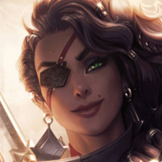

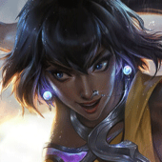


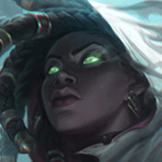





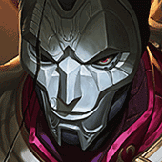

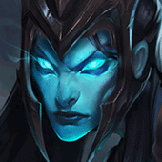

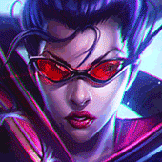
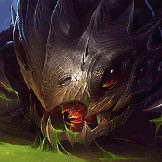



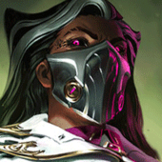
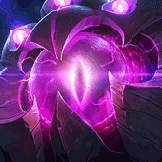
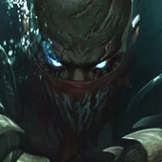
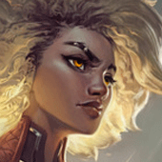


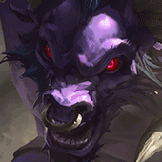




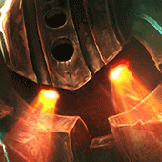
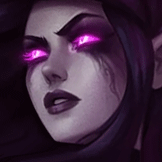
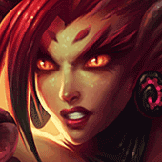
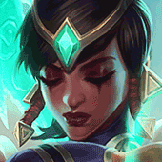


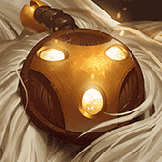

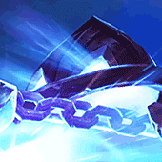

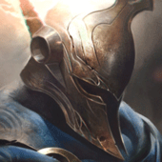
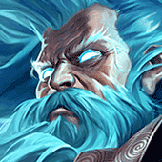











 Twitter
Twitter
 YouTube
YouTube
 Twitch
Twitch
 PayPal
PayPal
You must be logged in to comment. Please login or register.